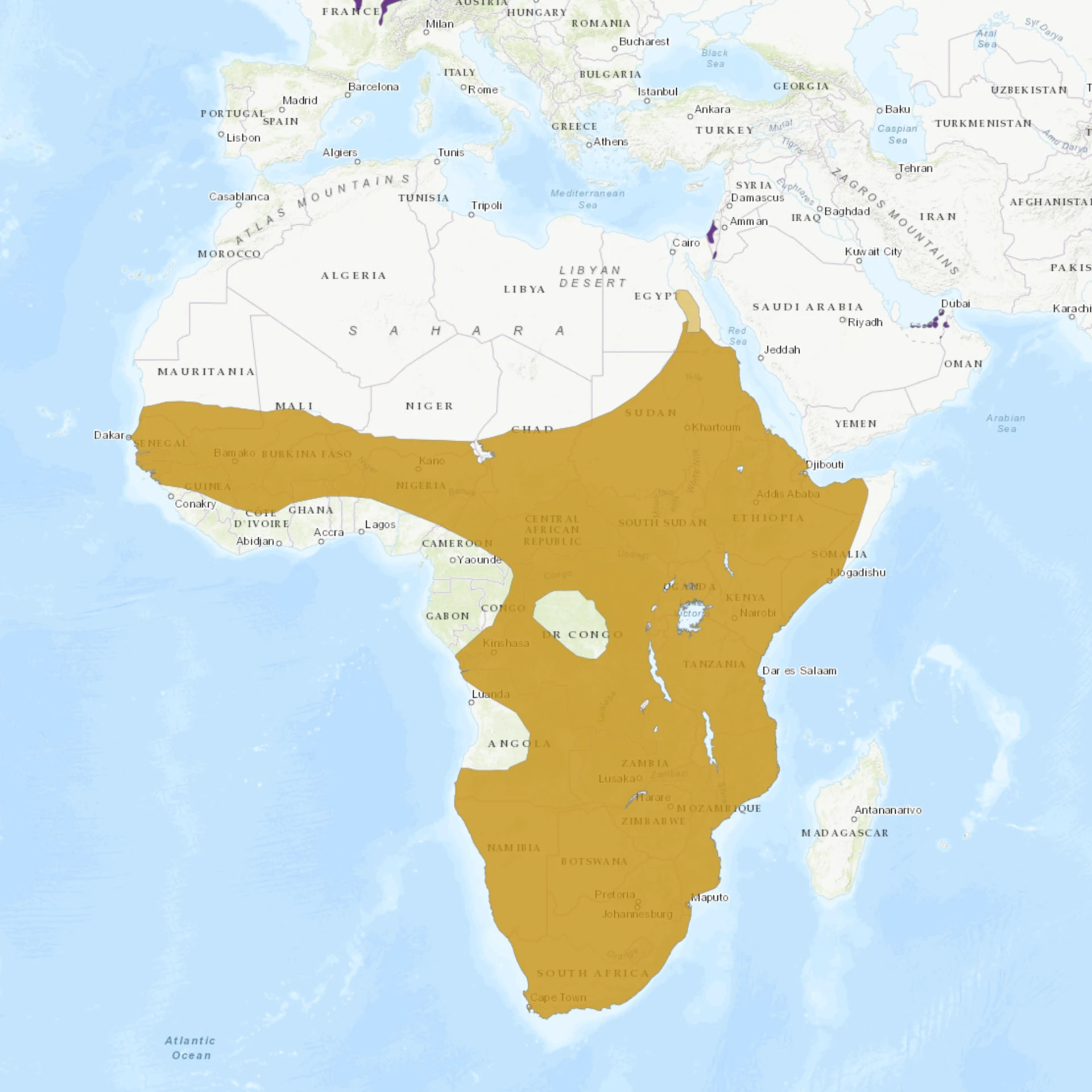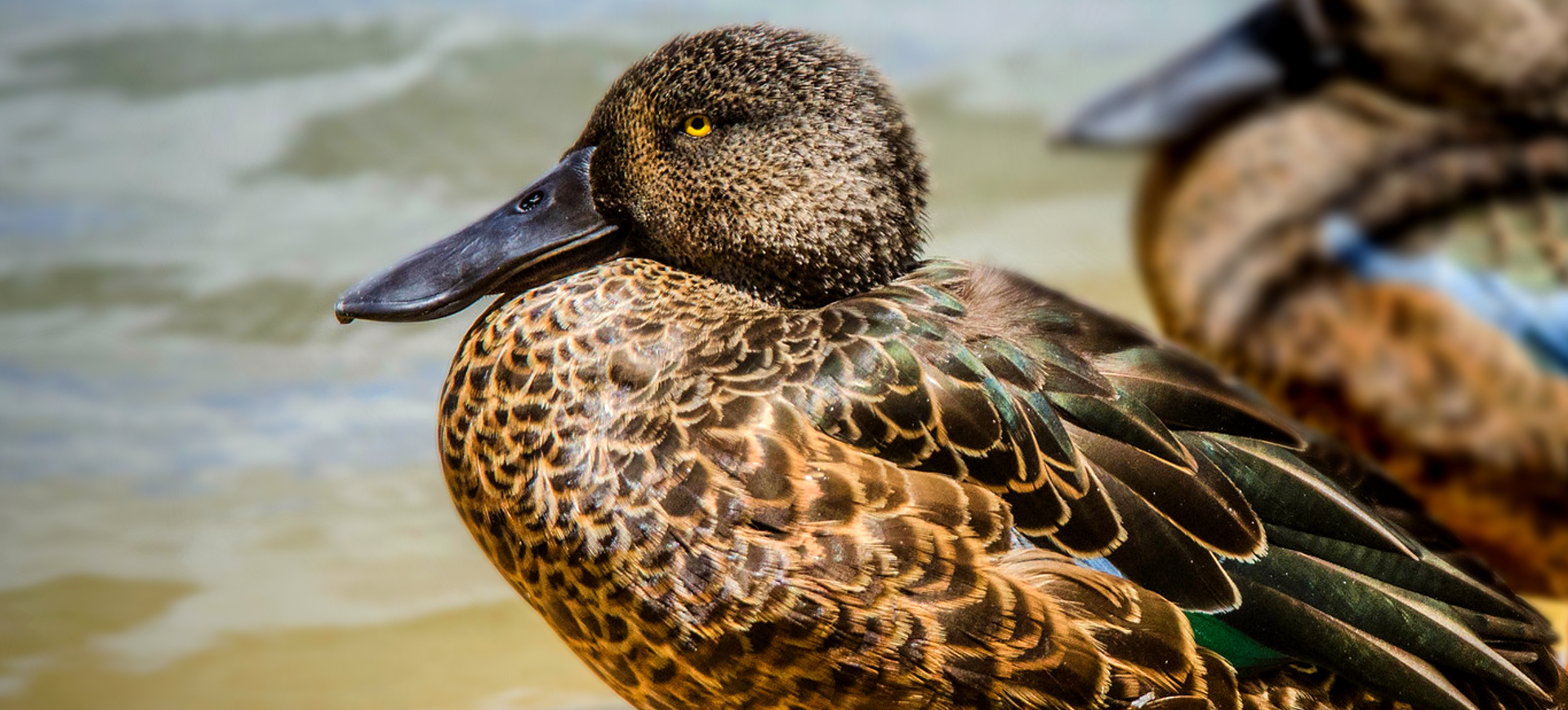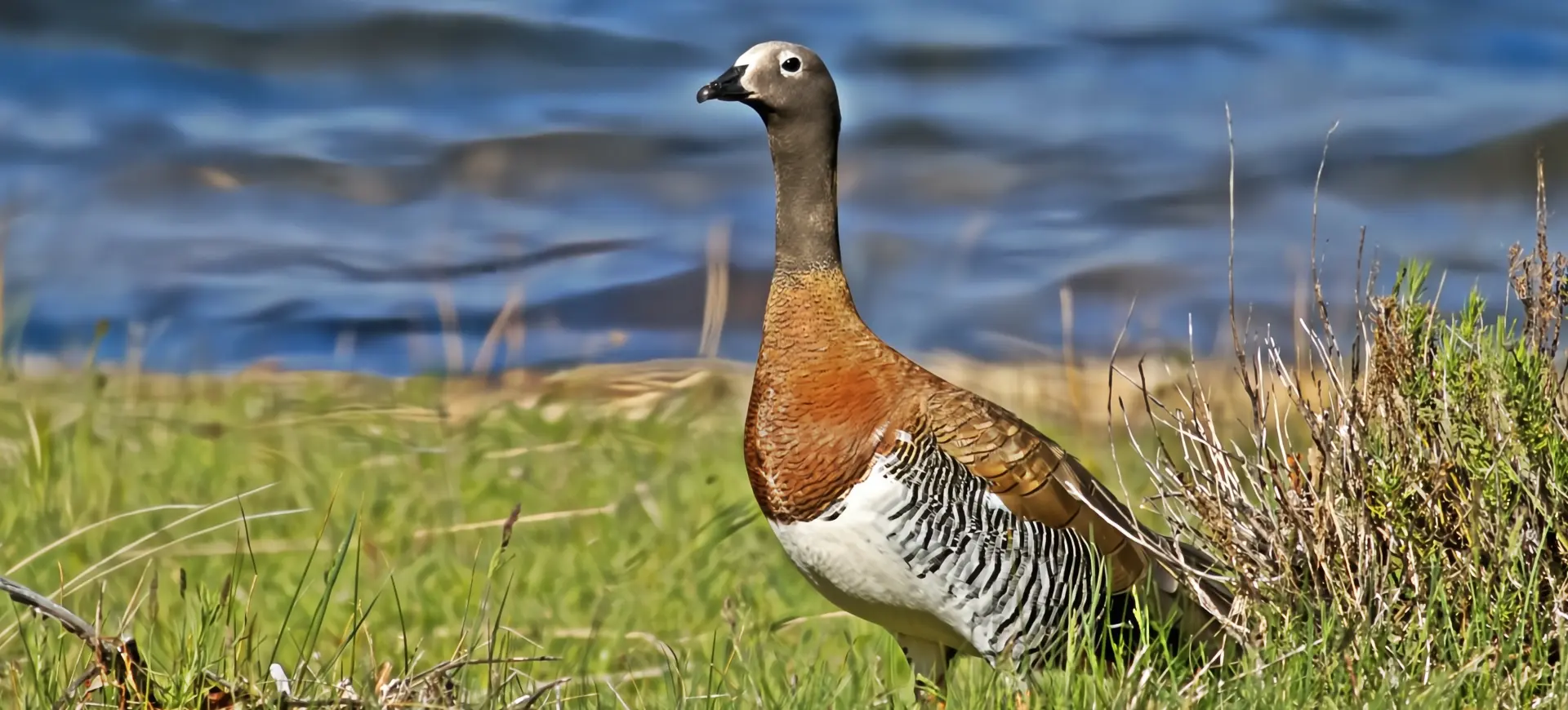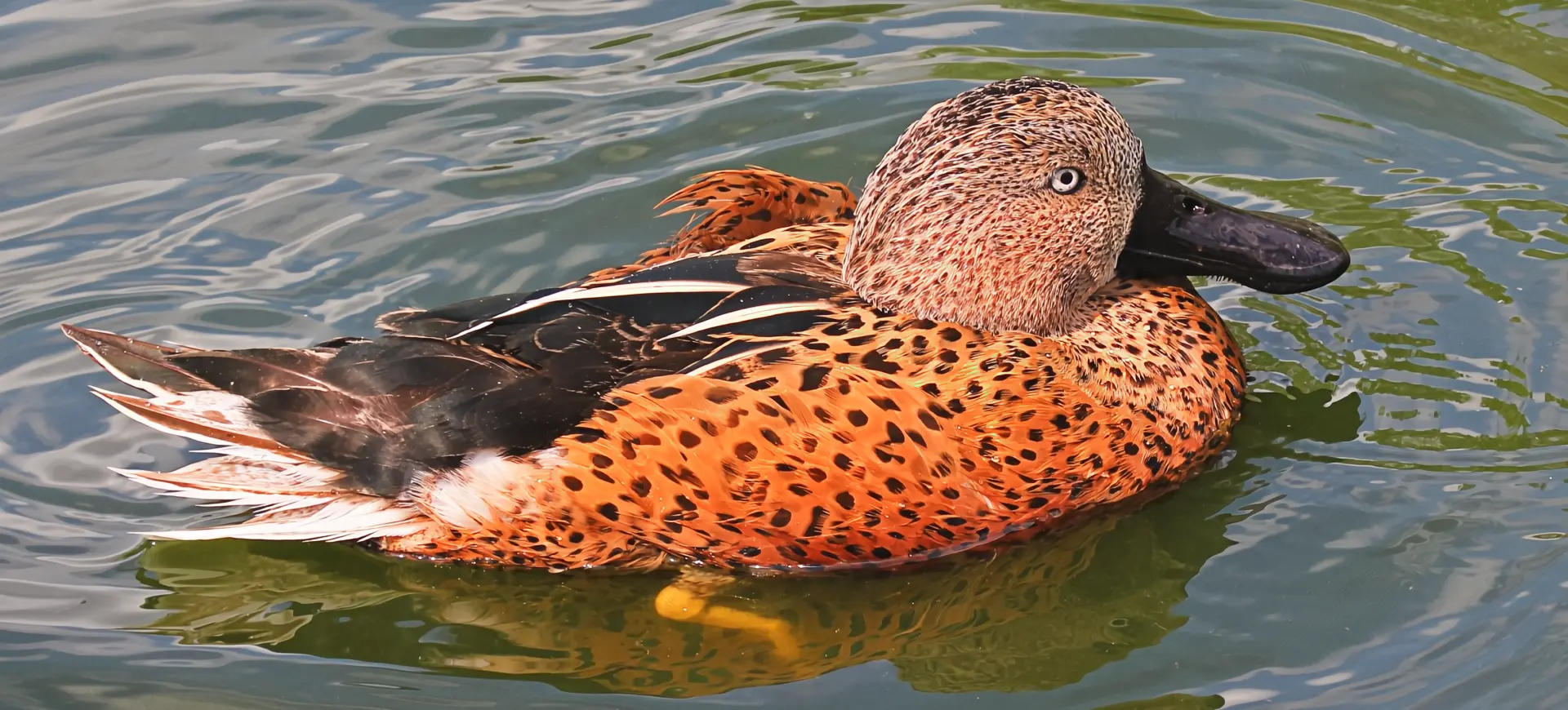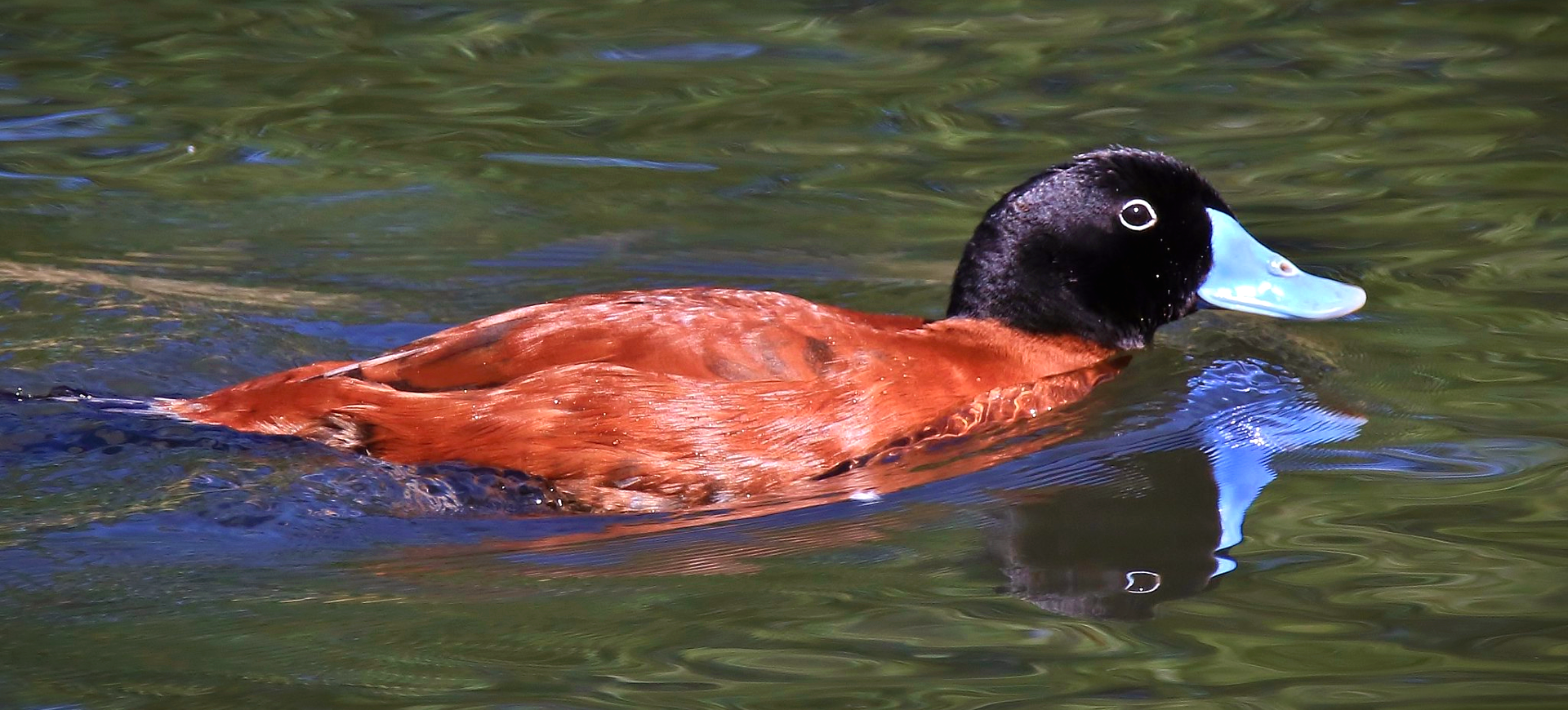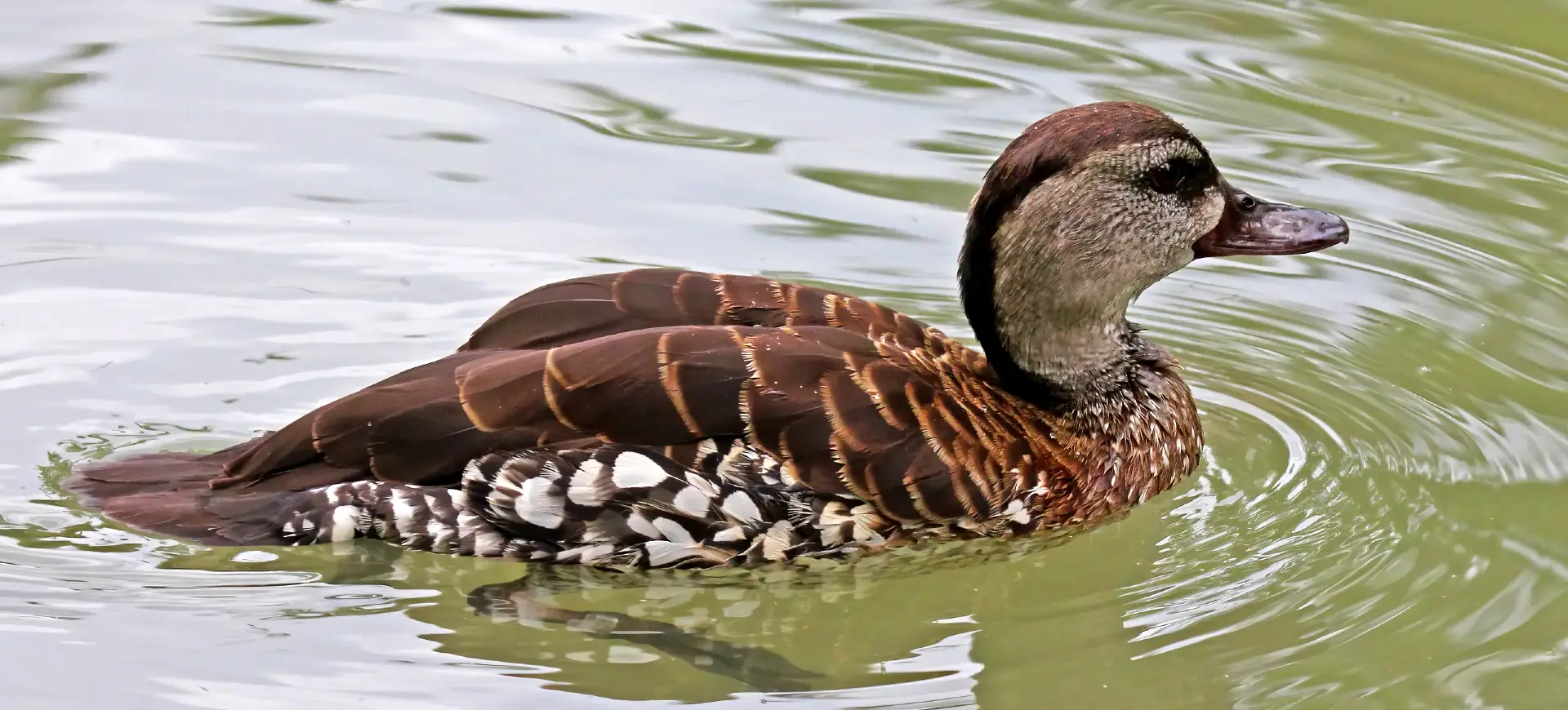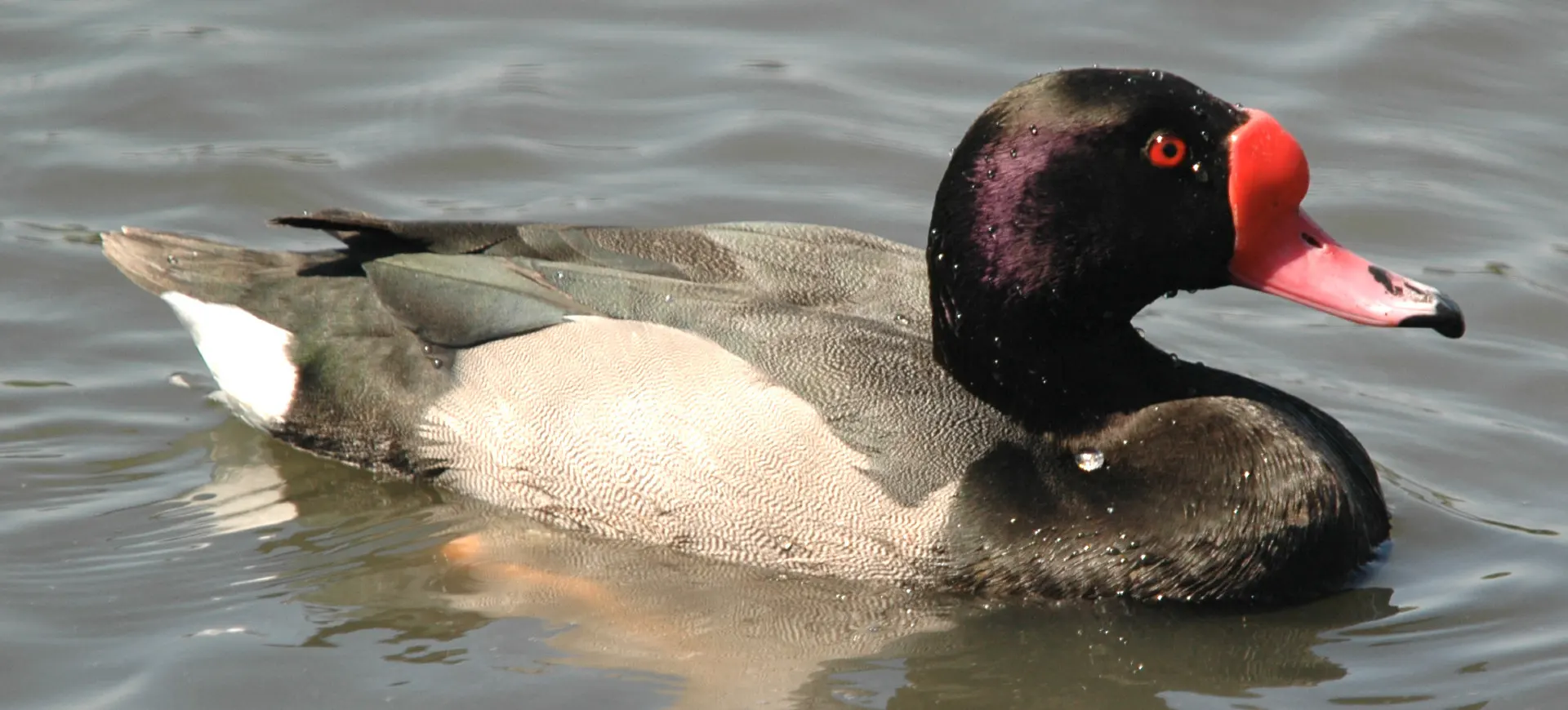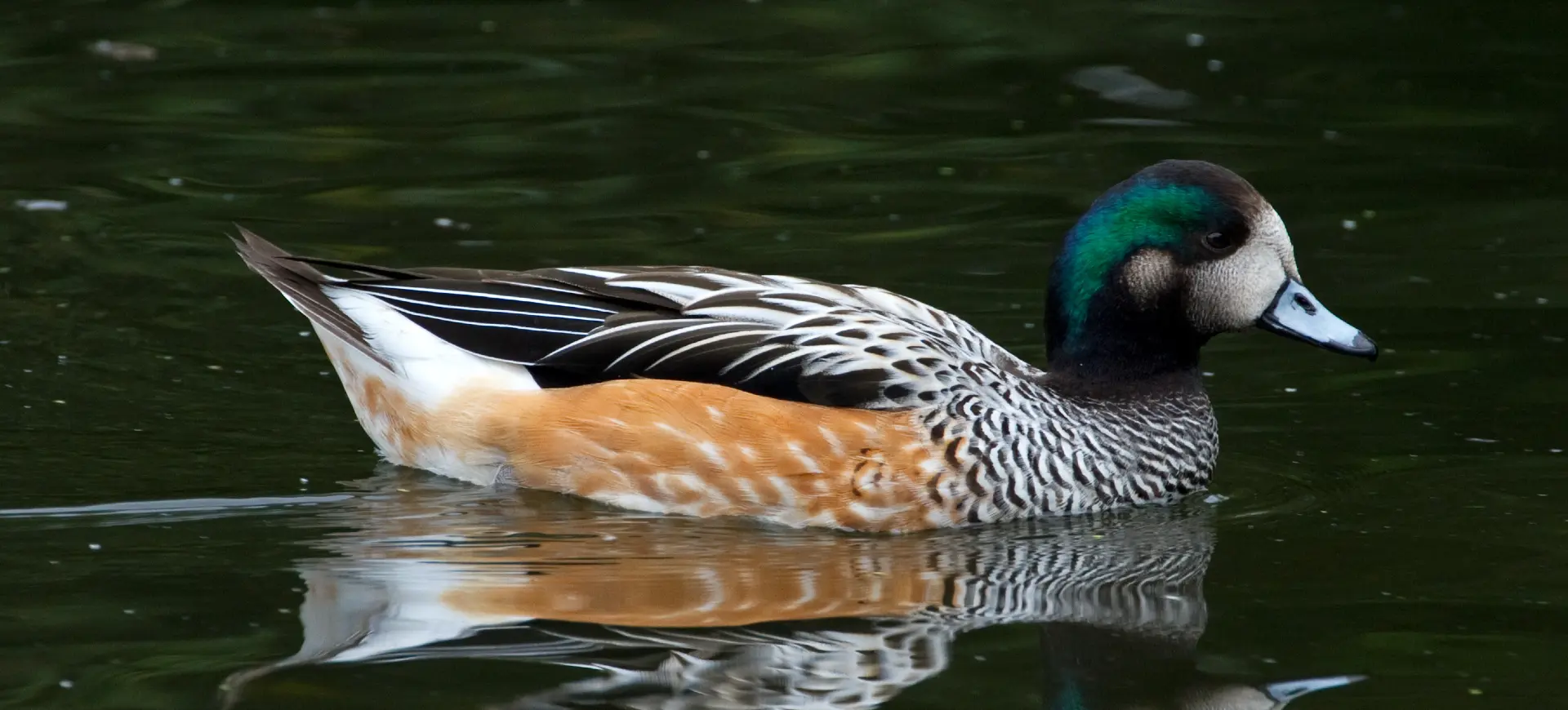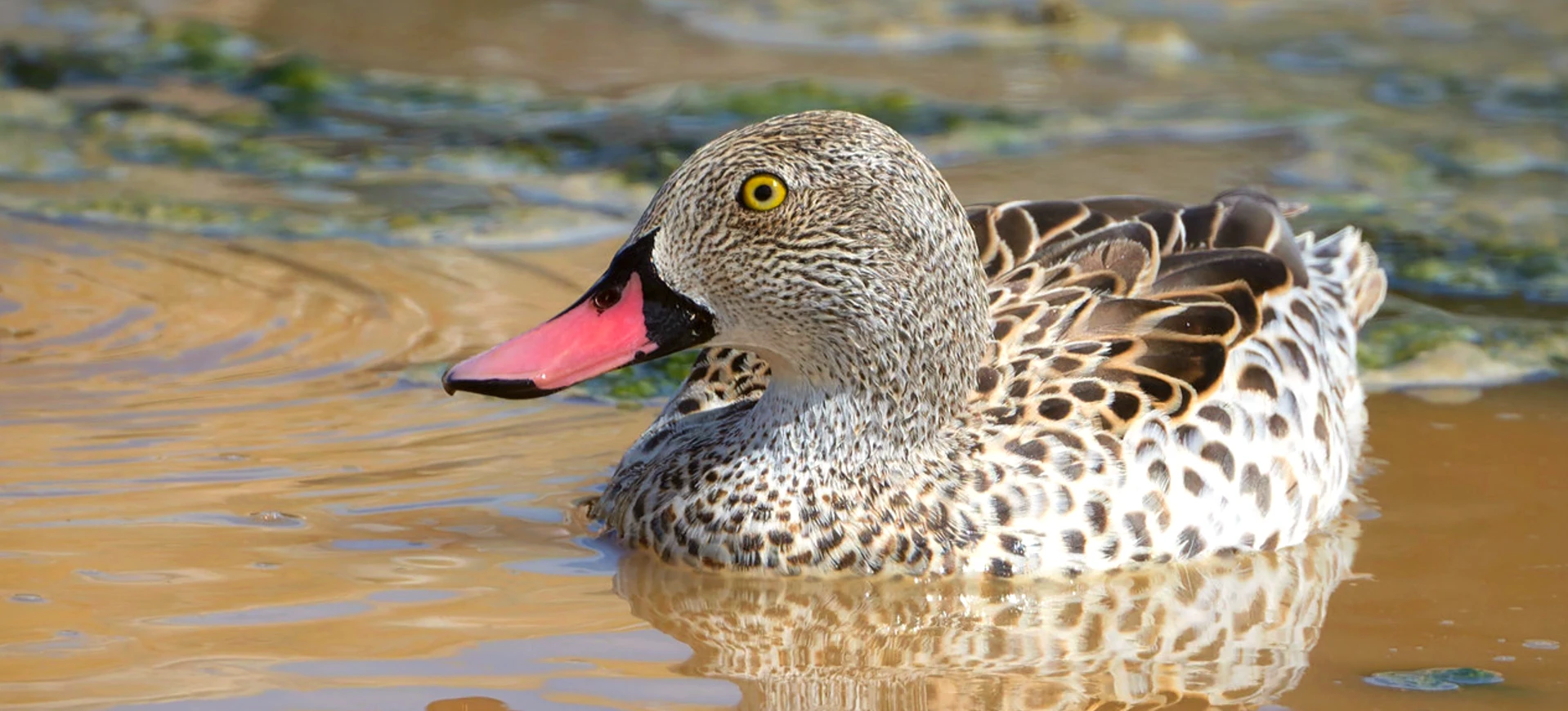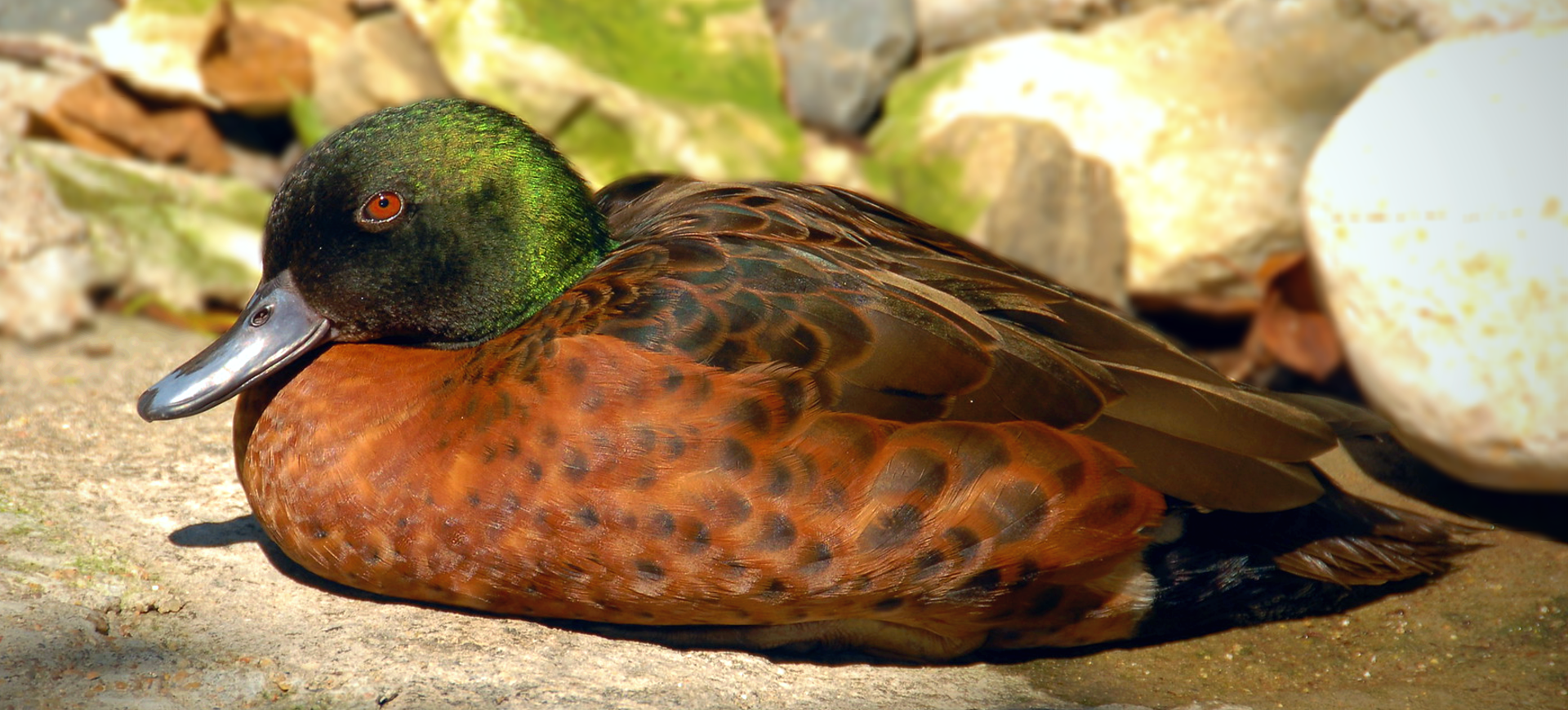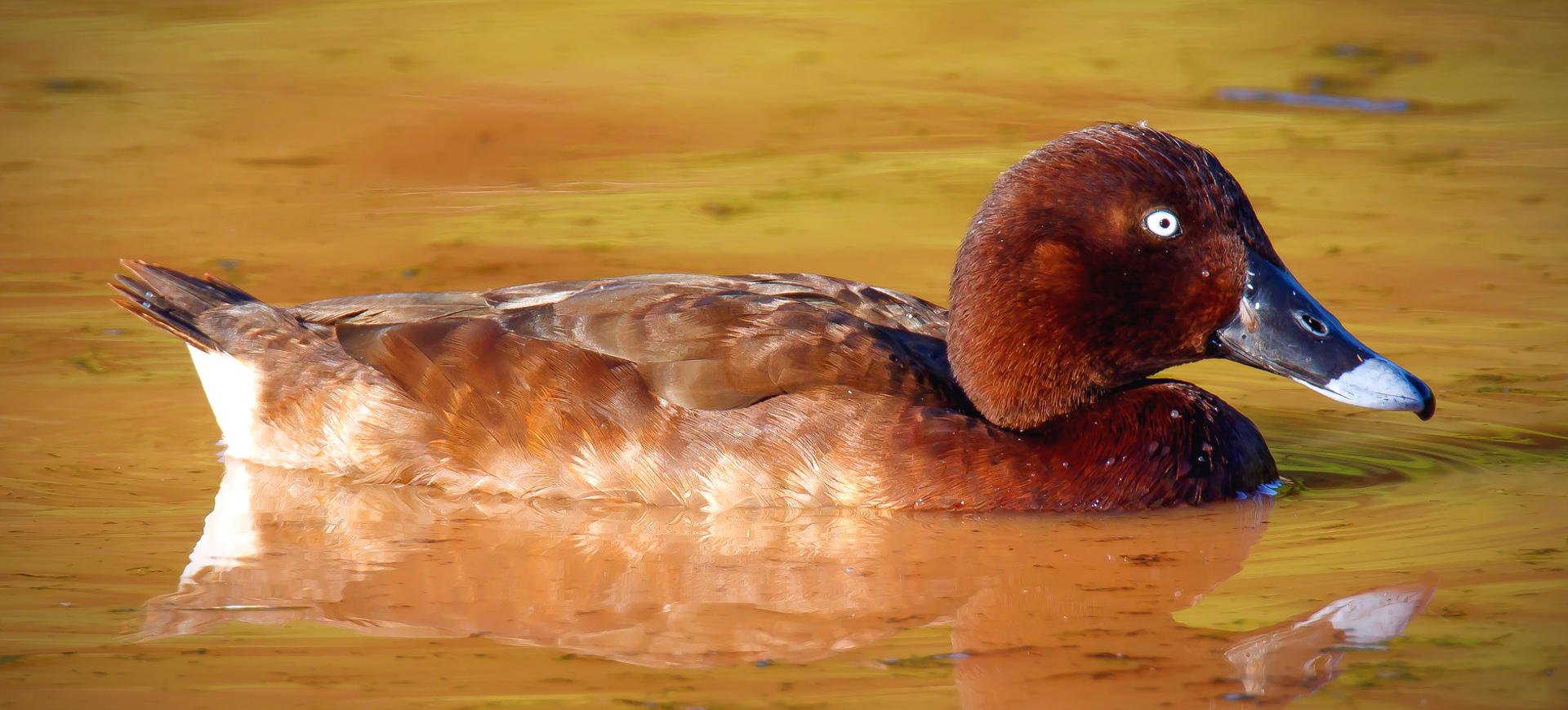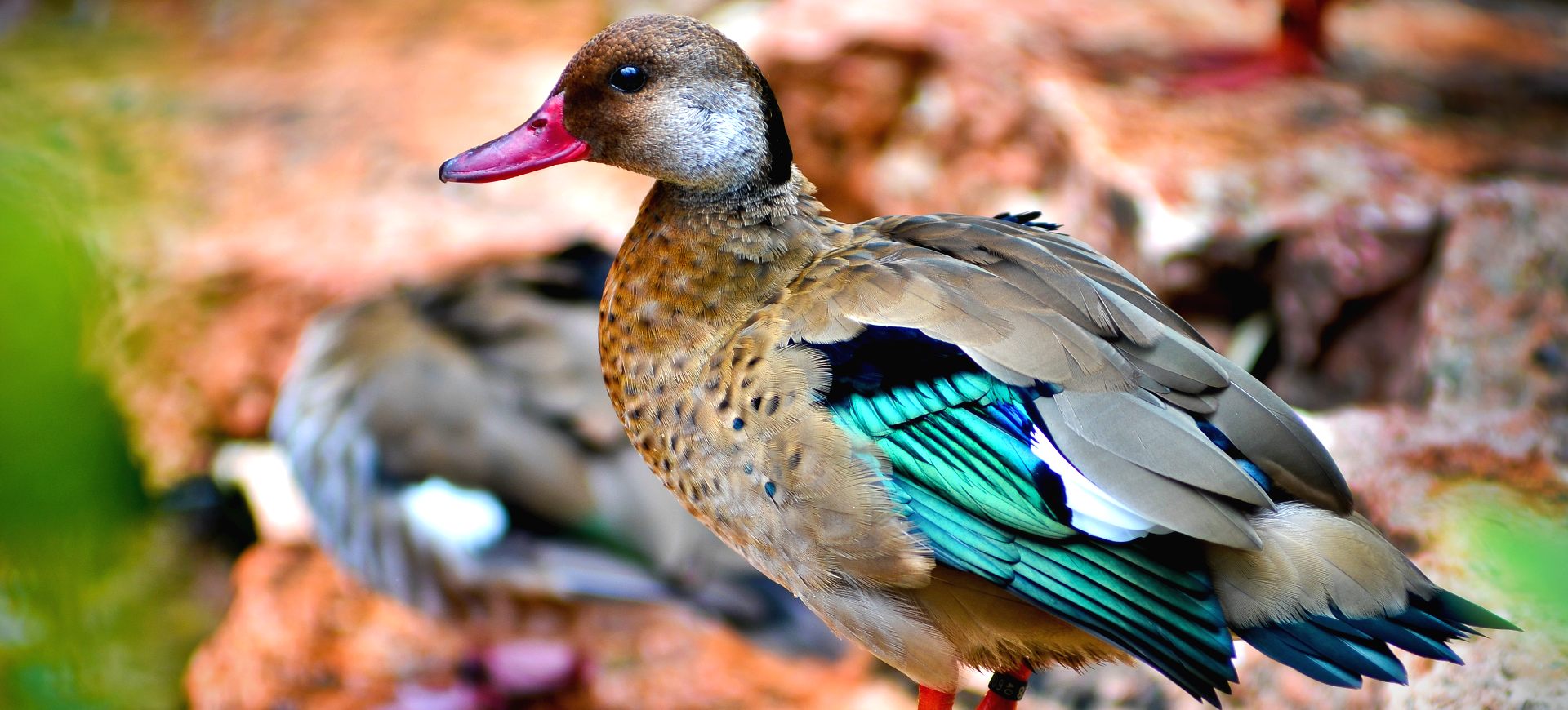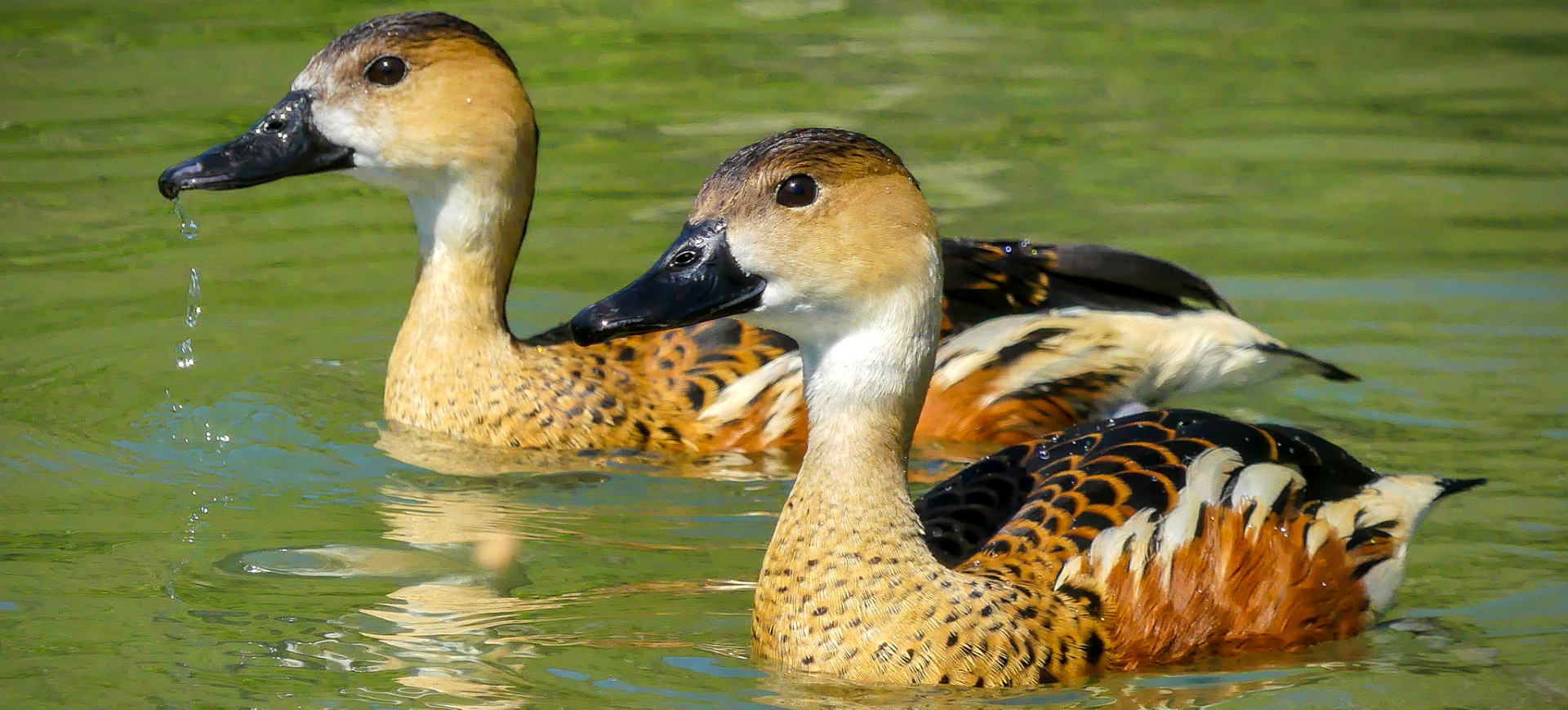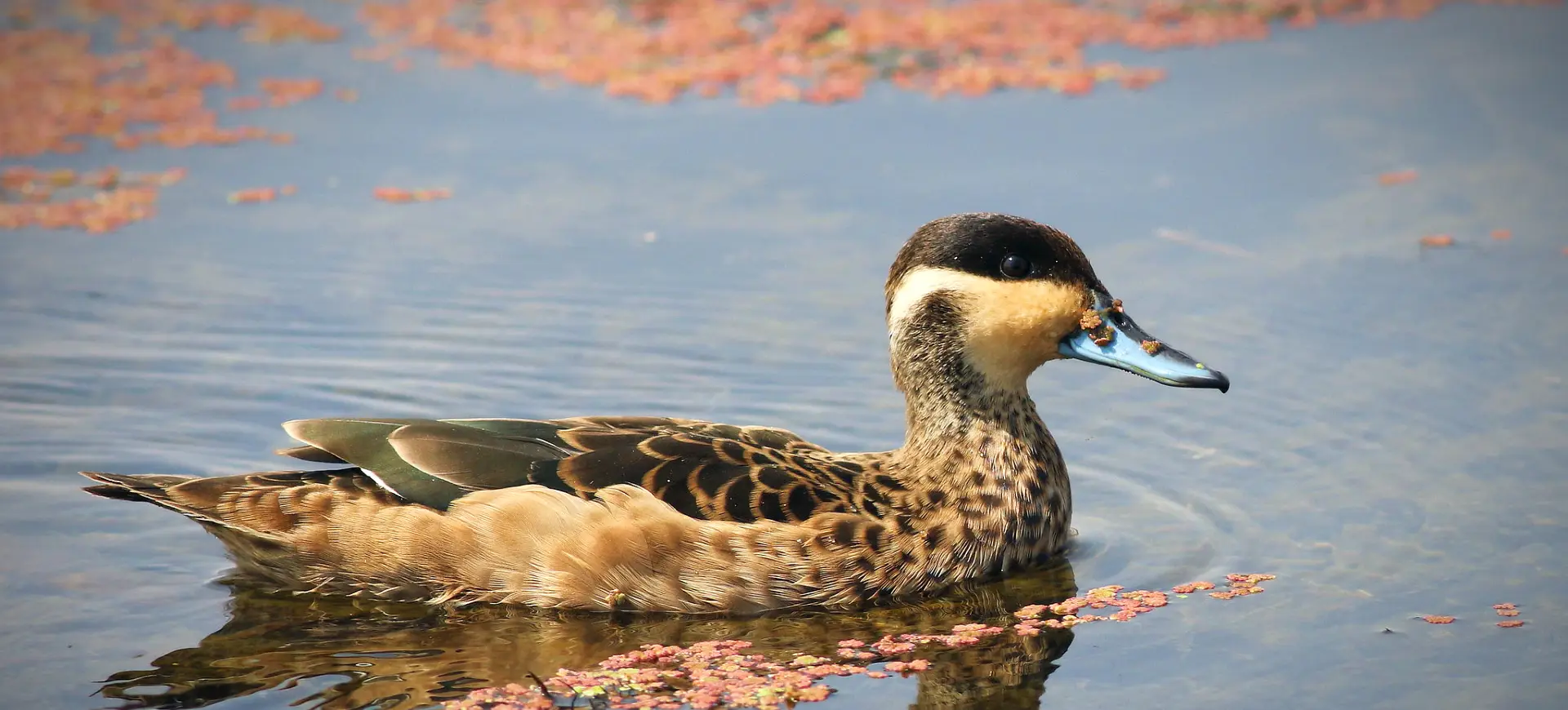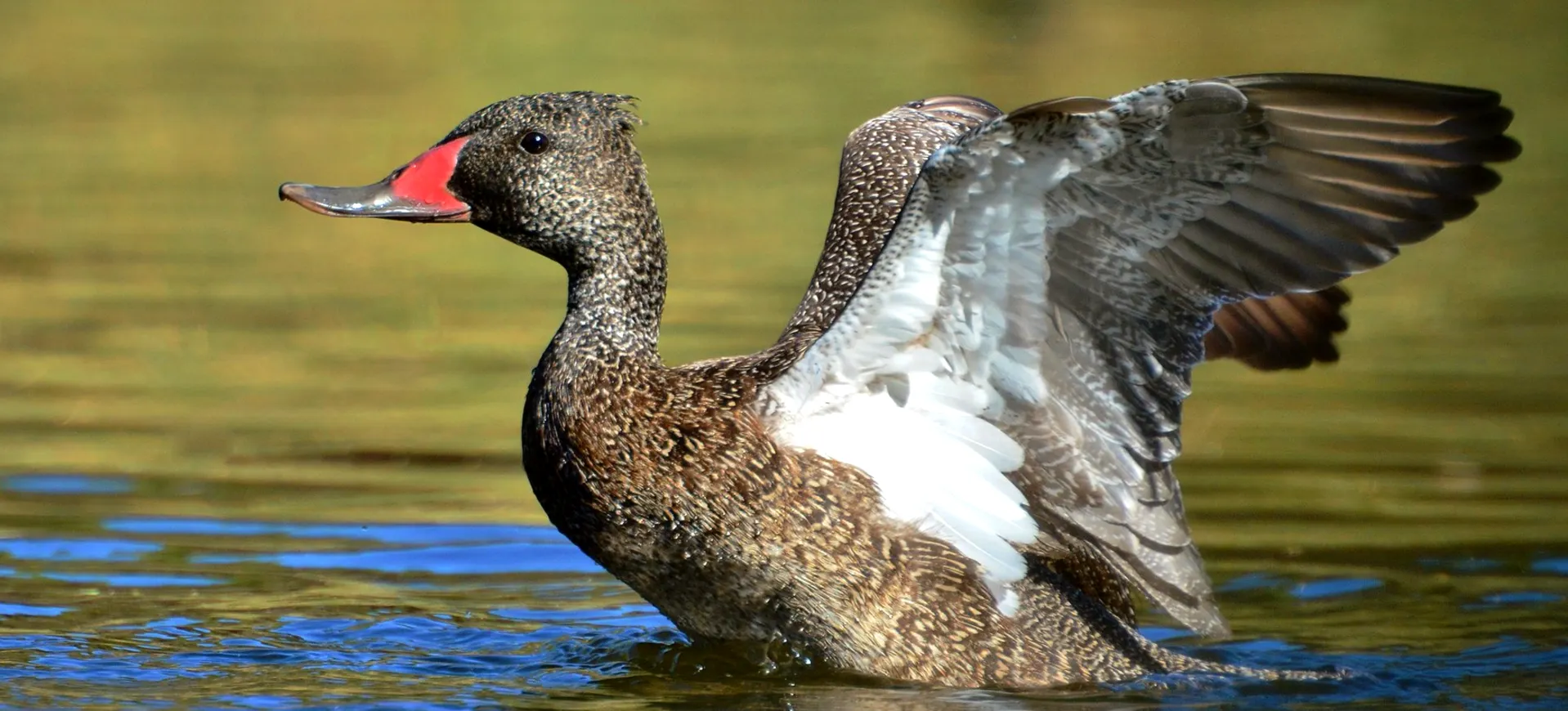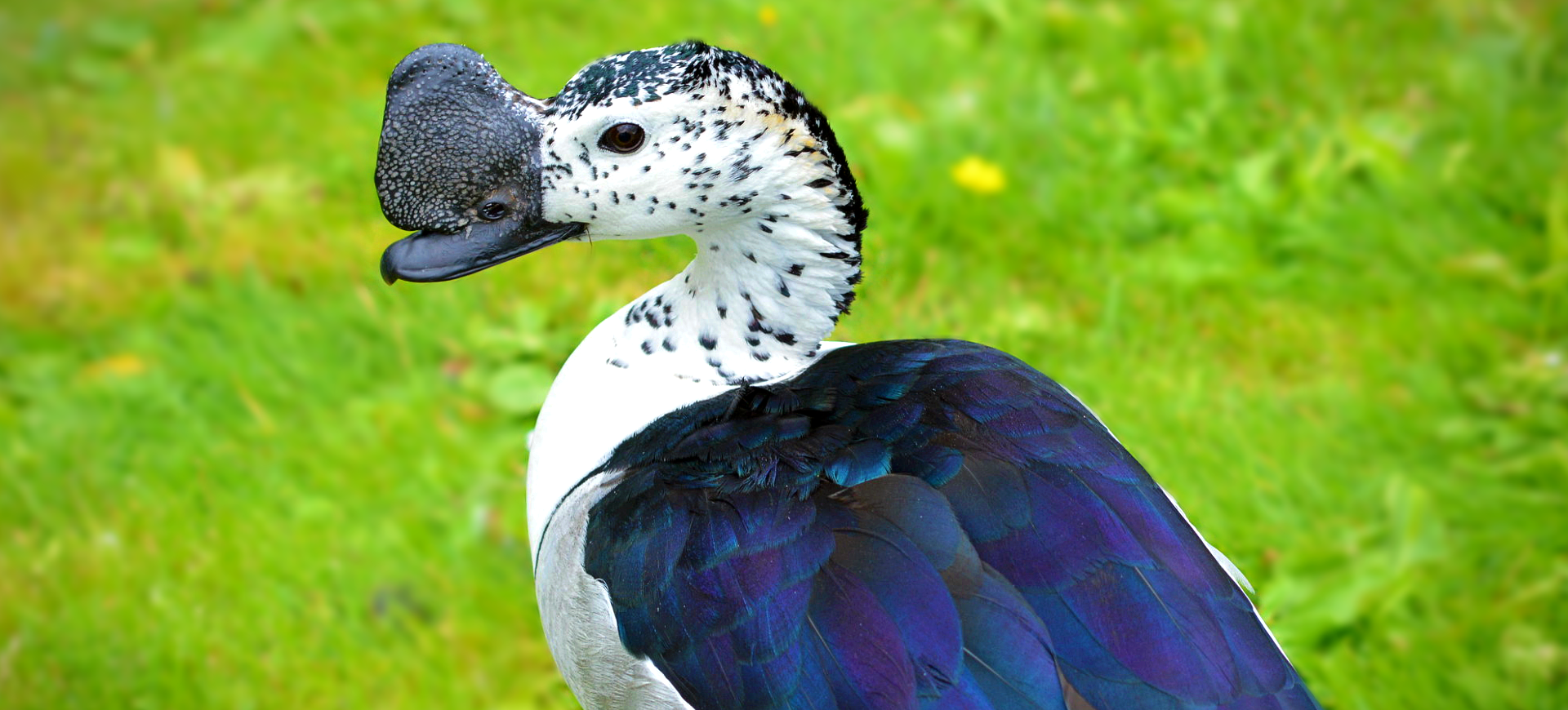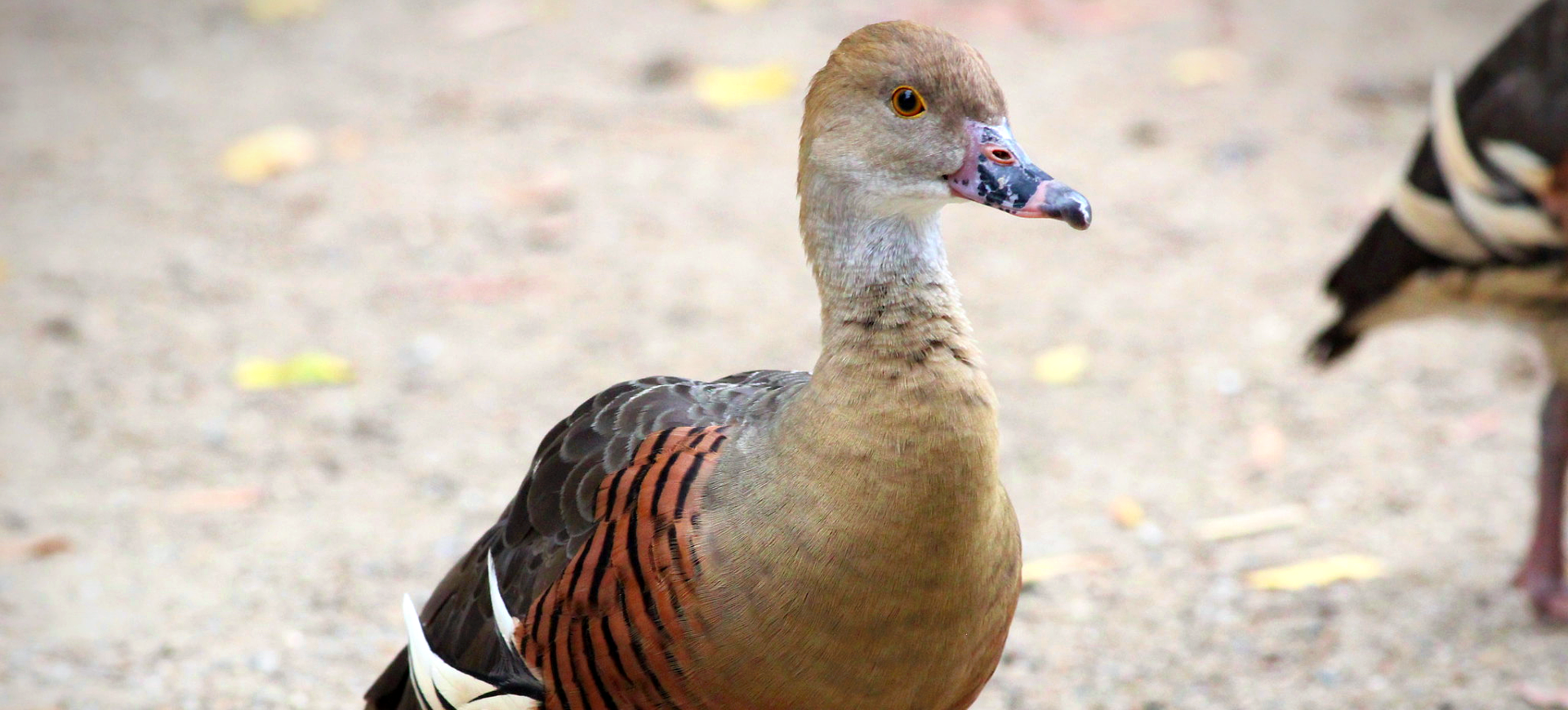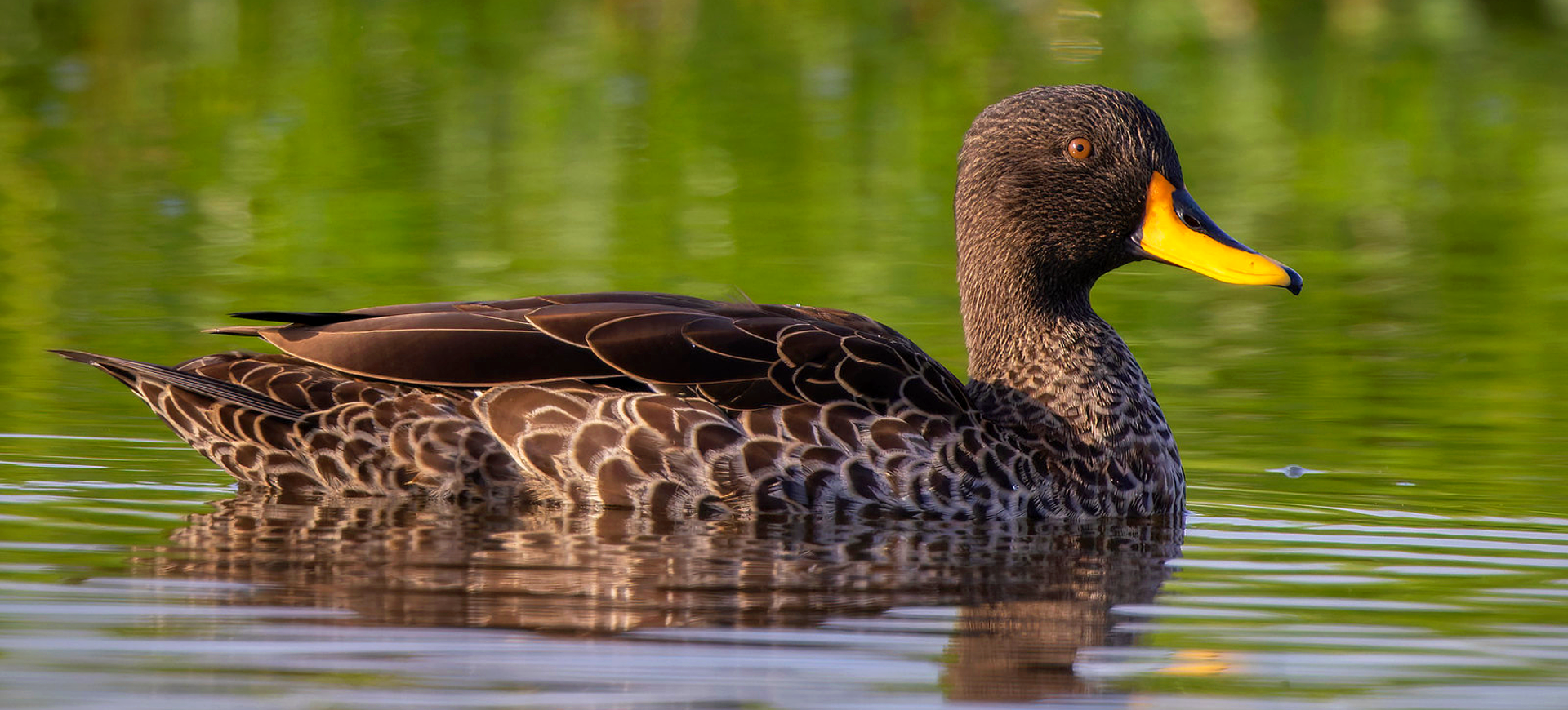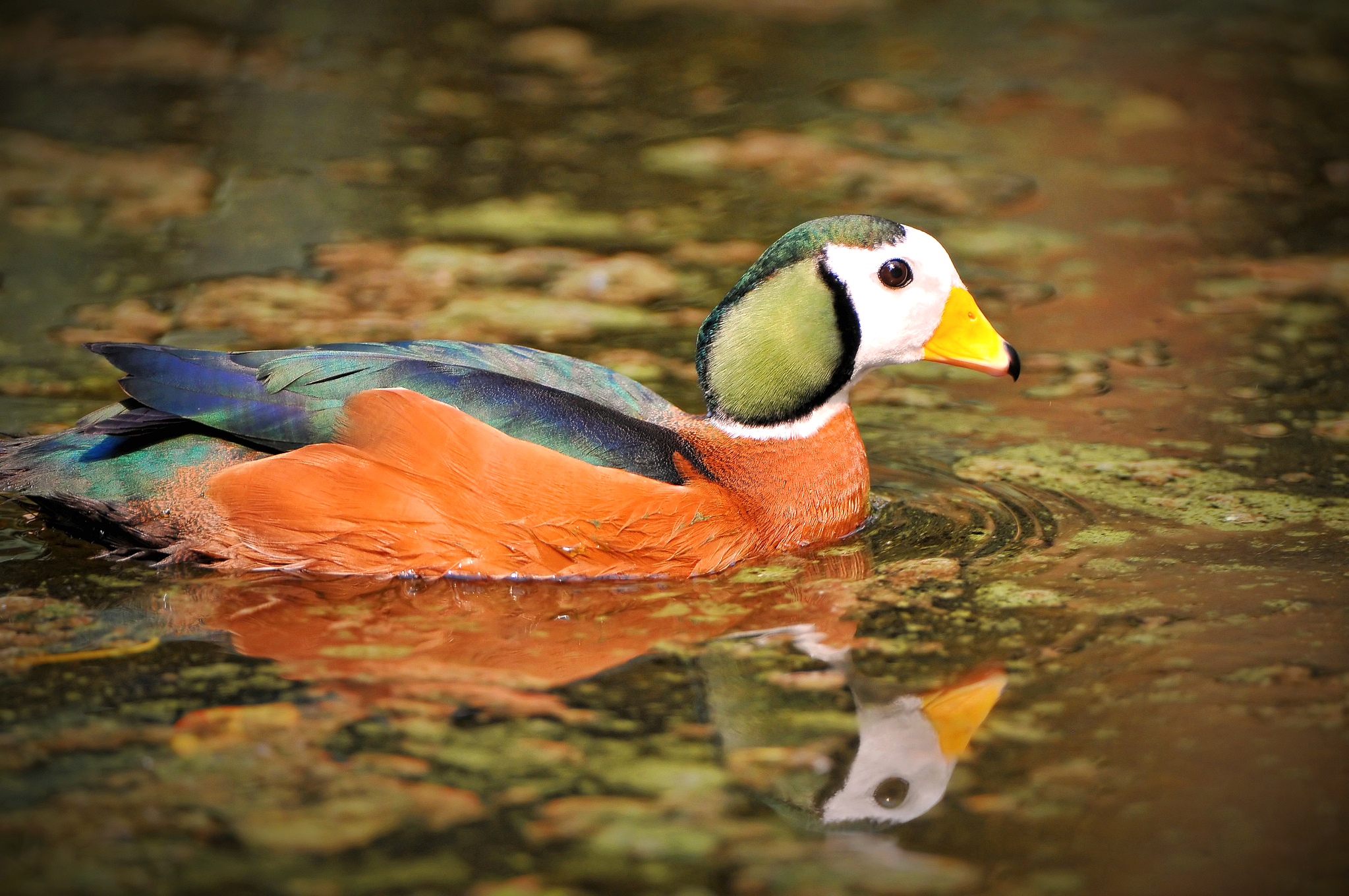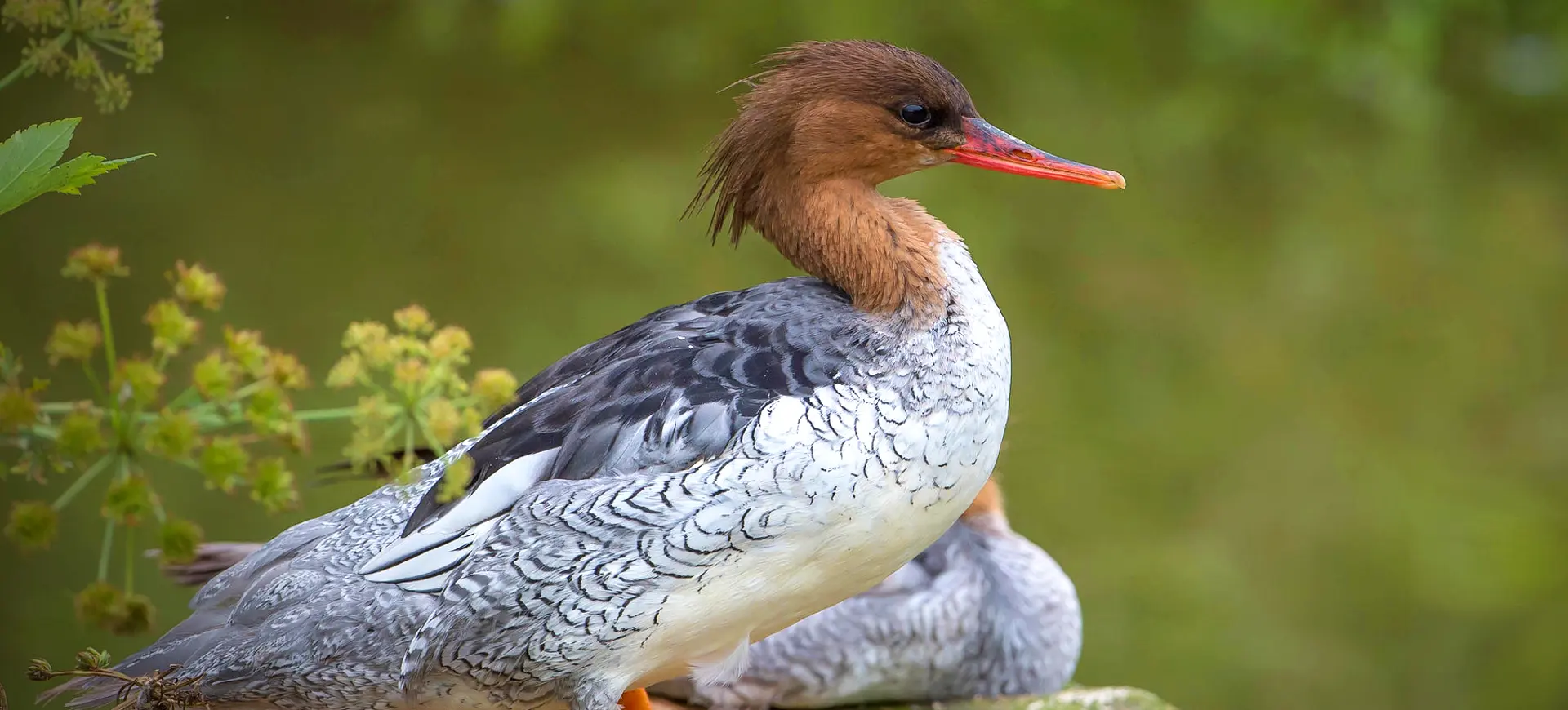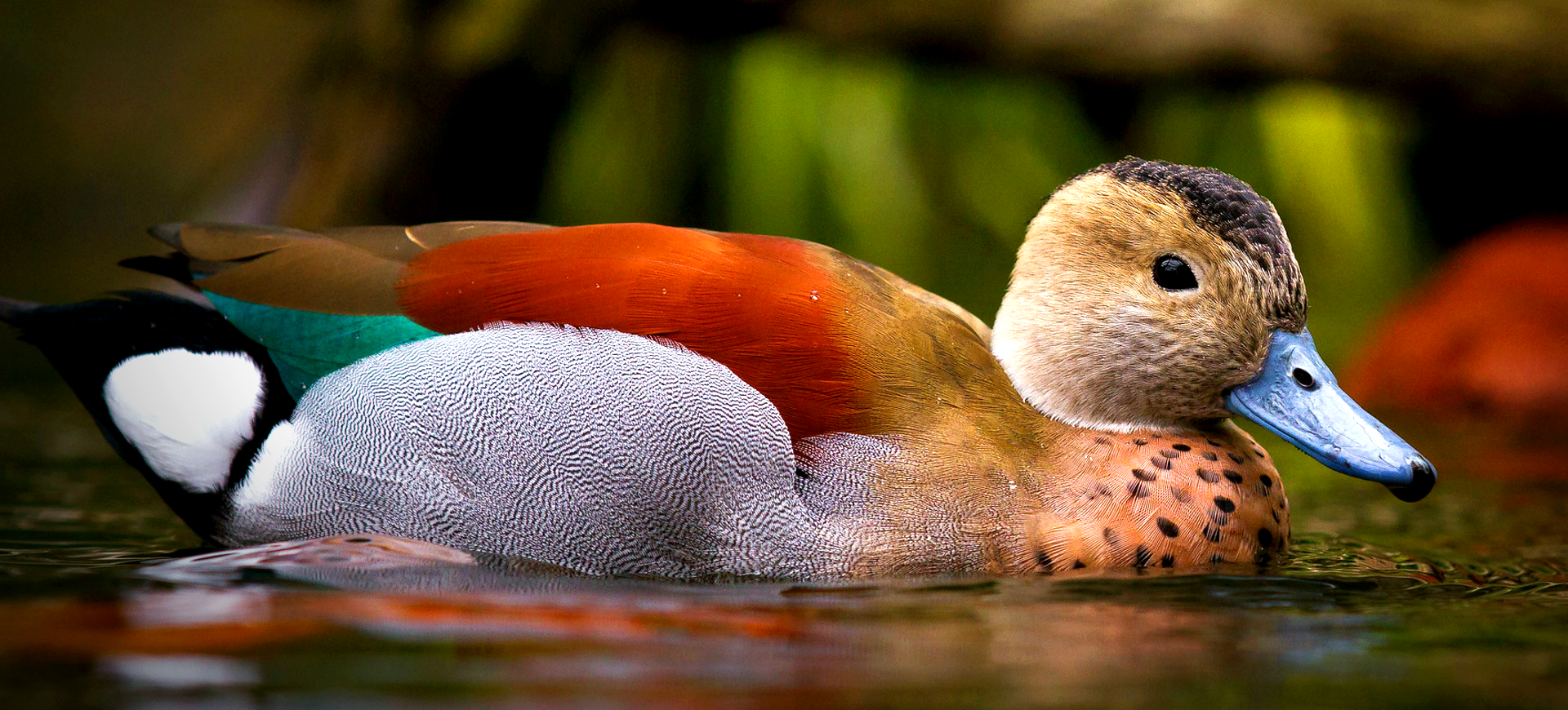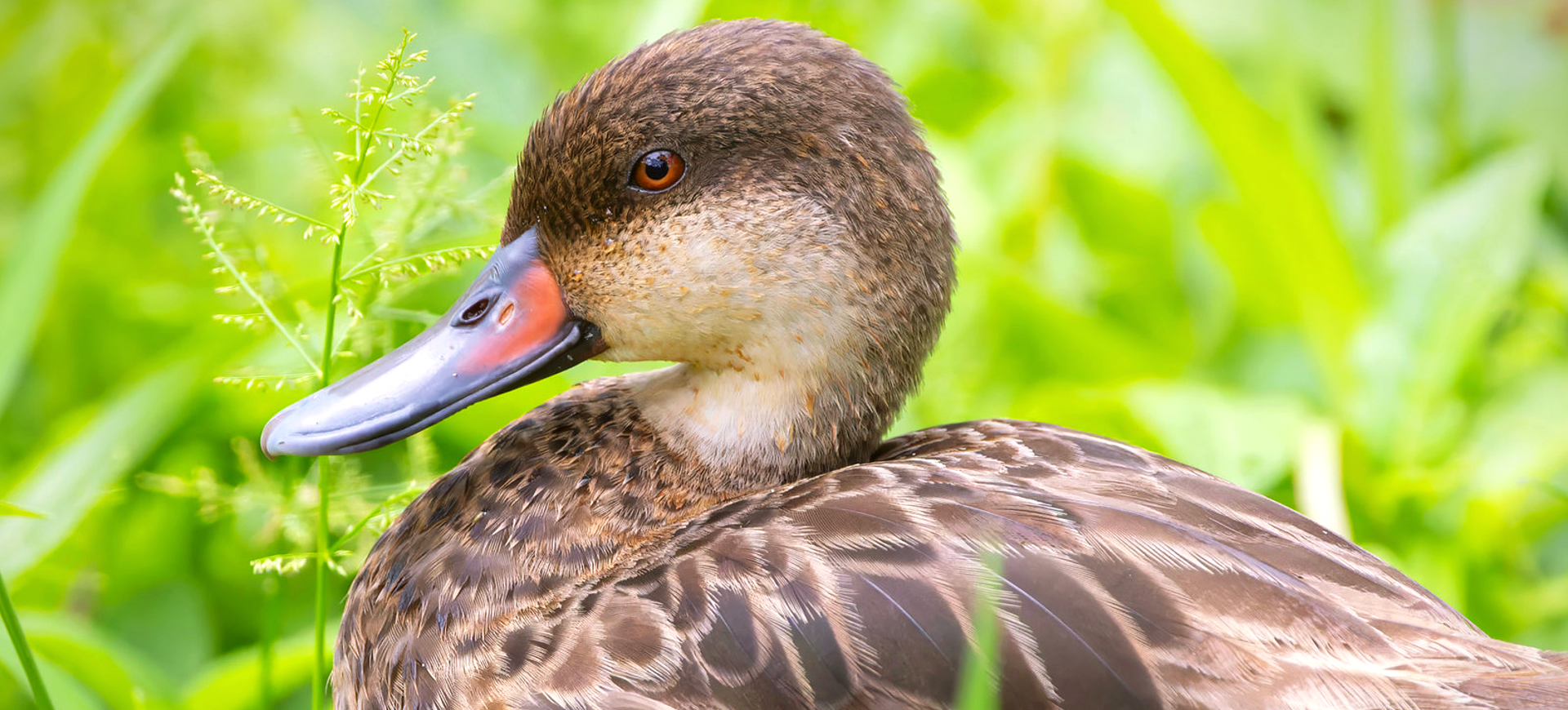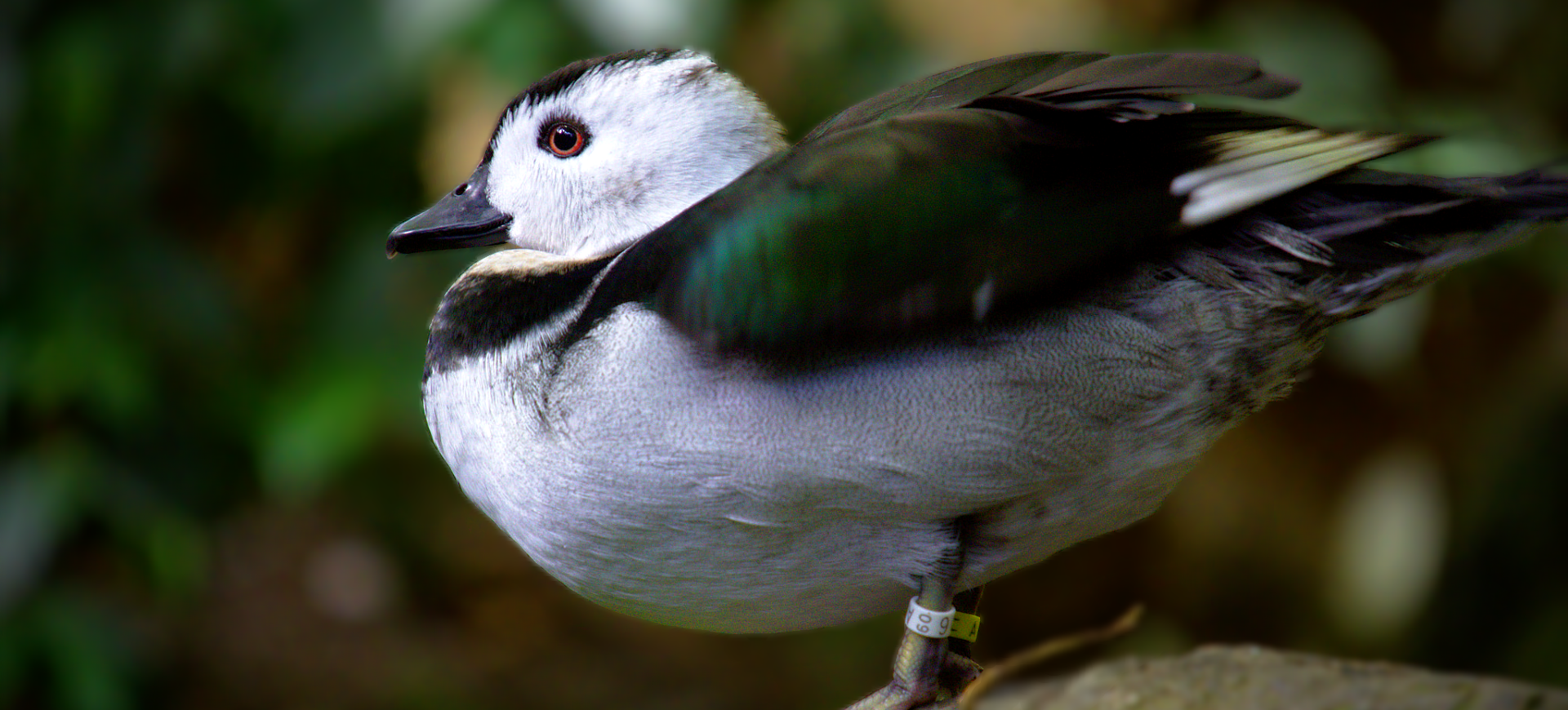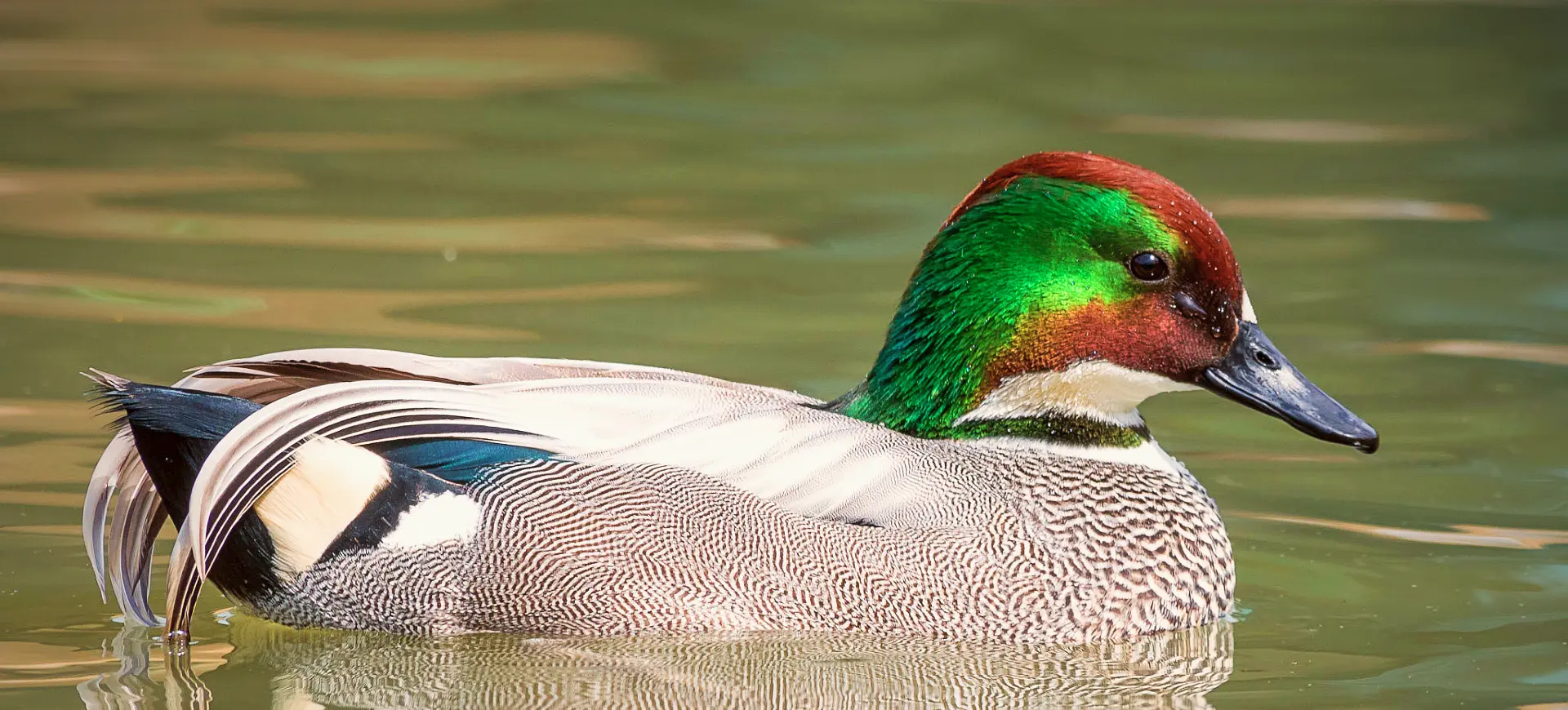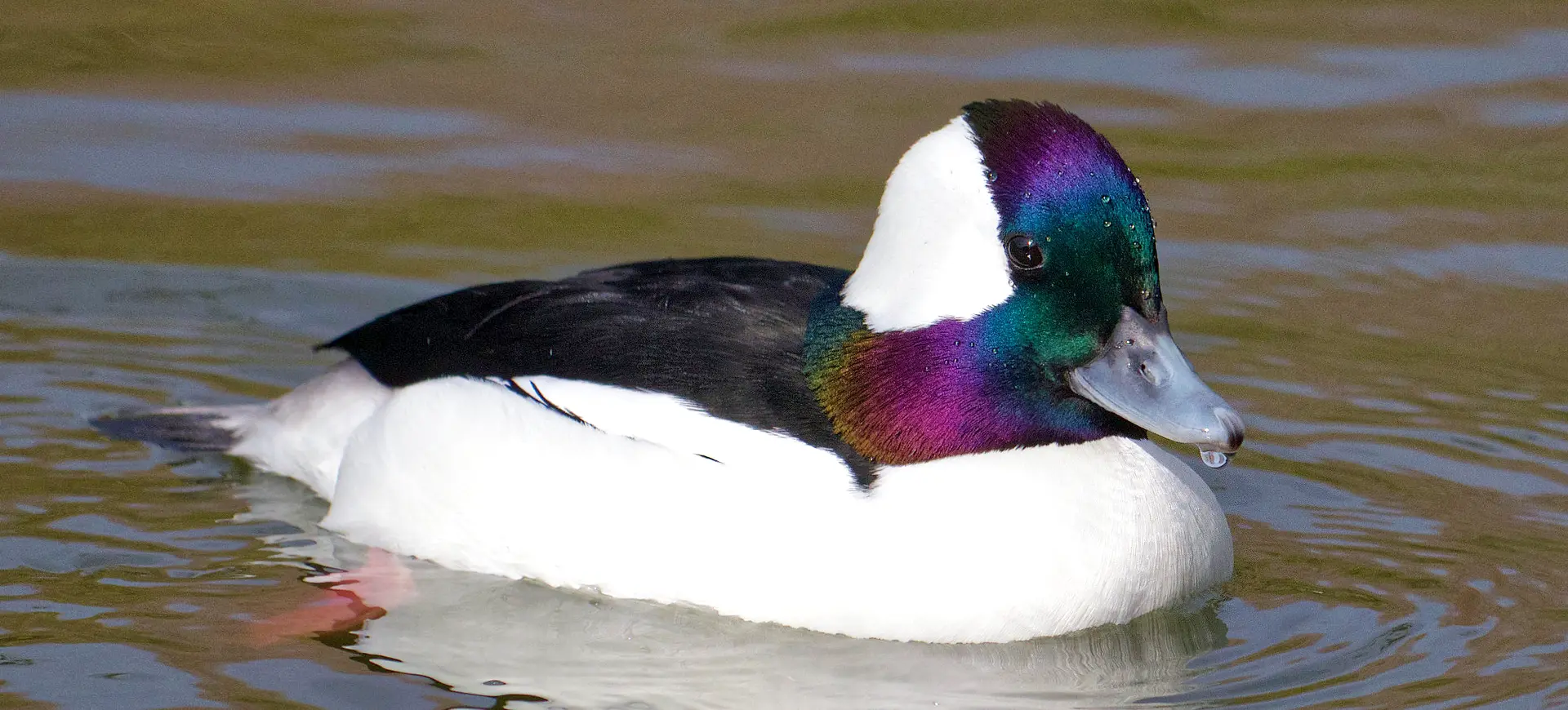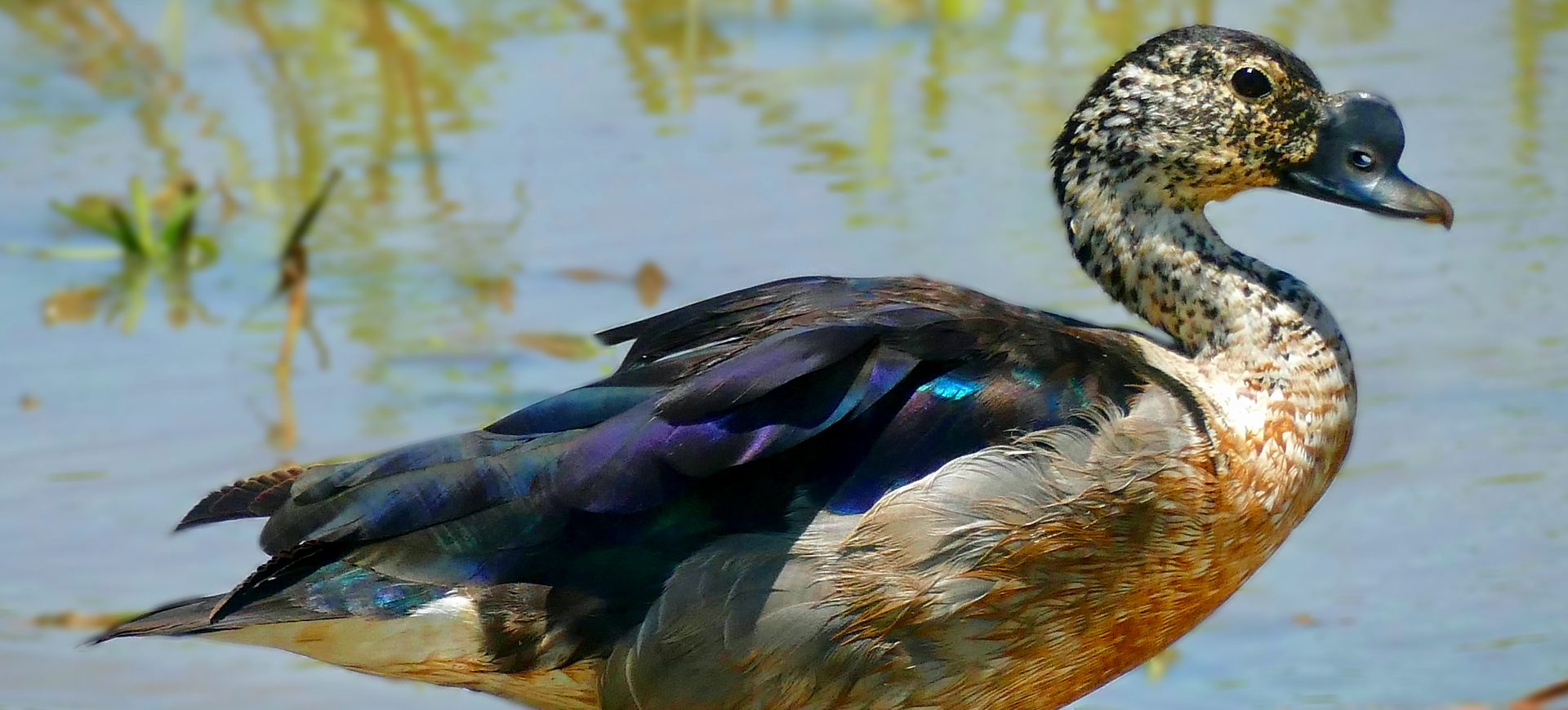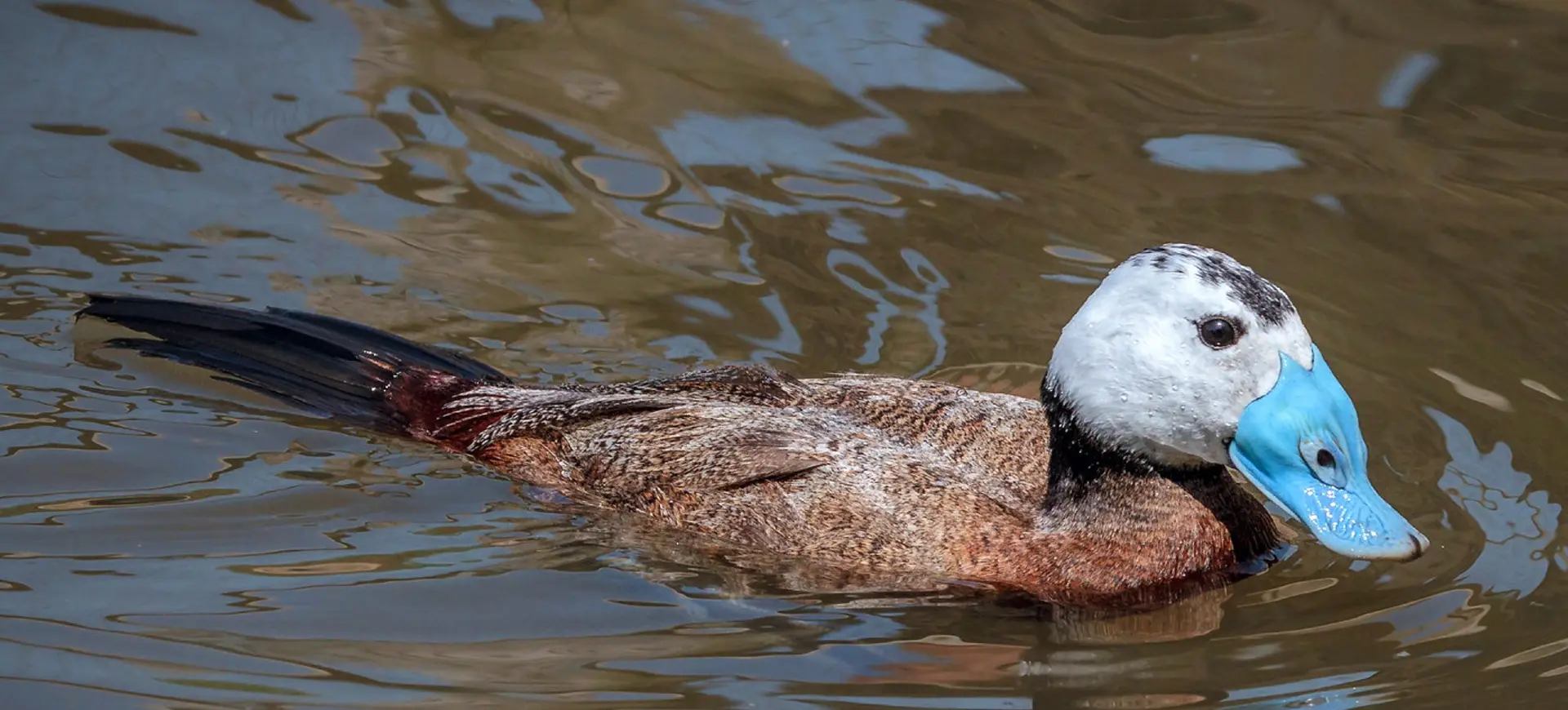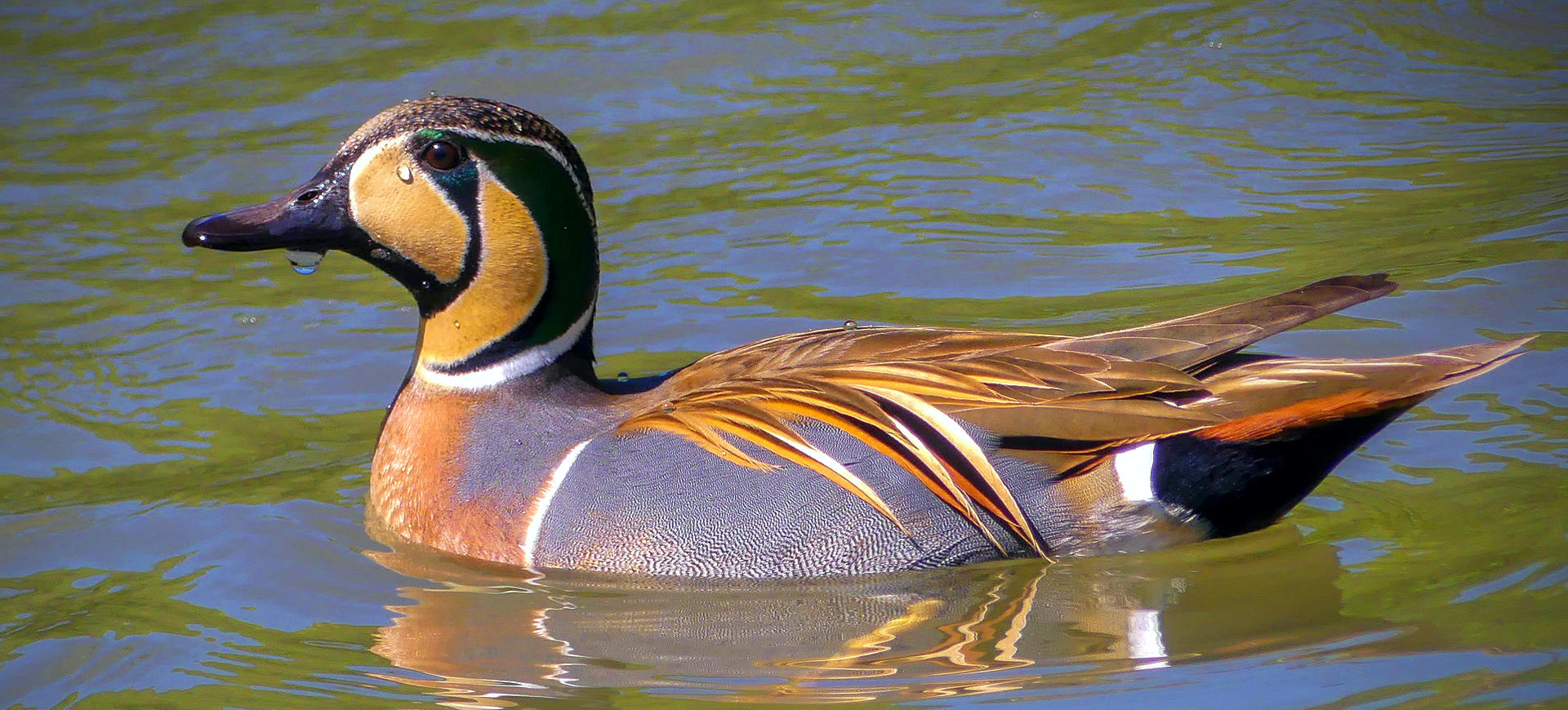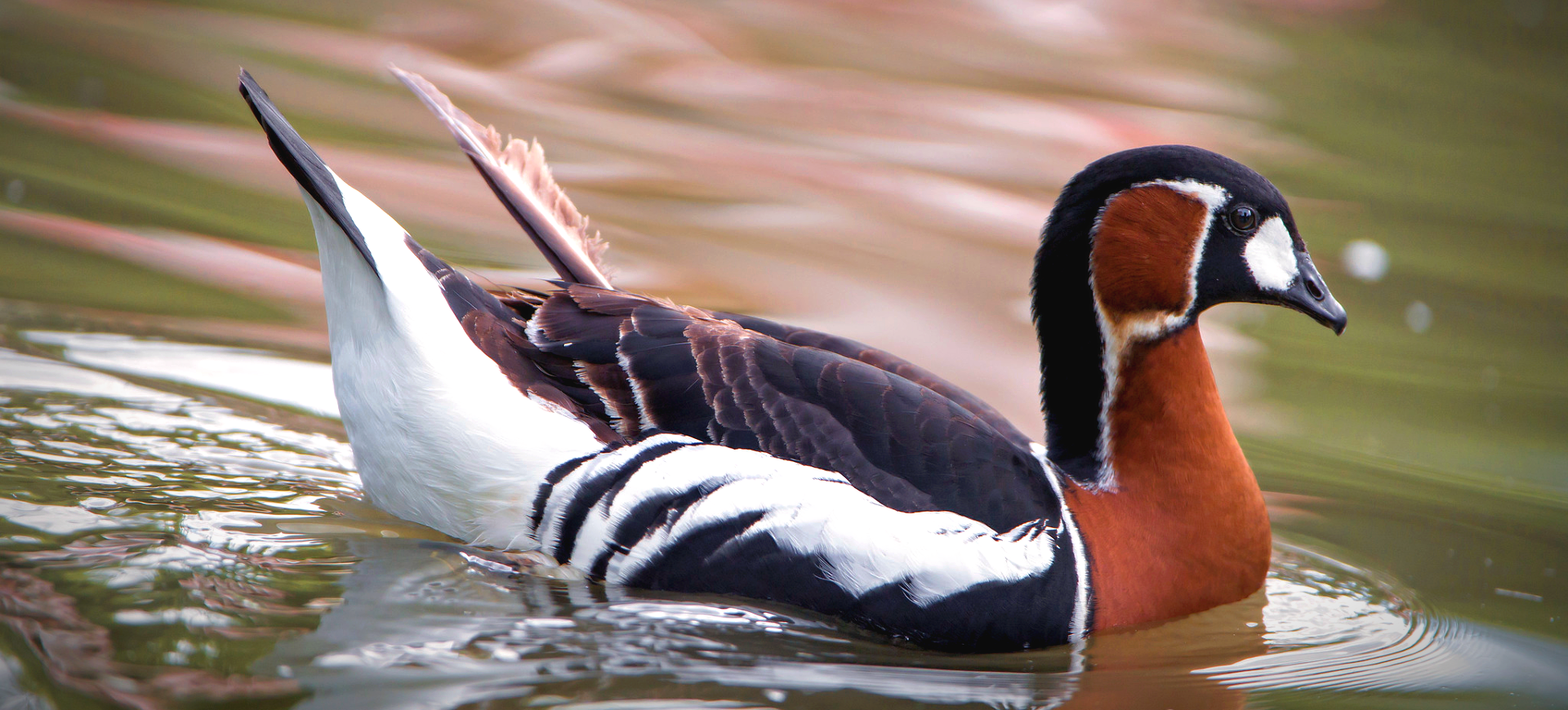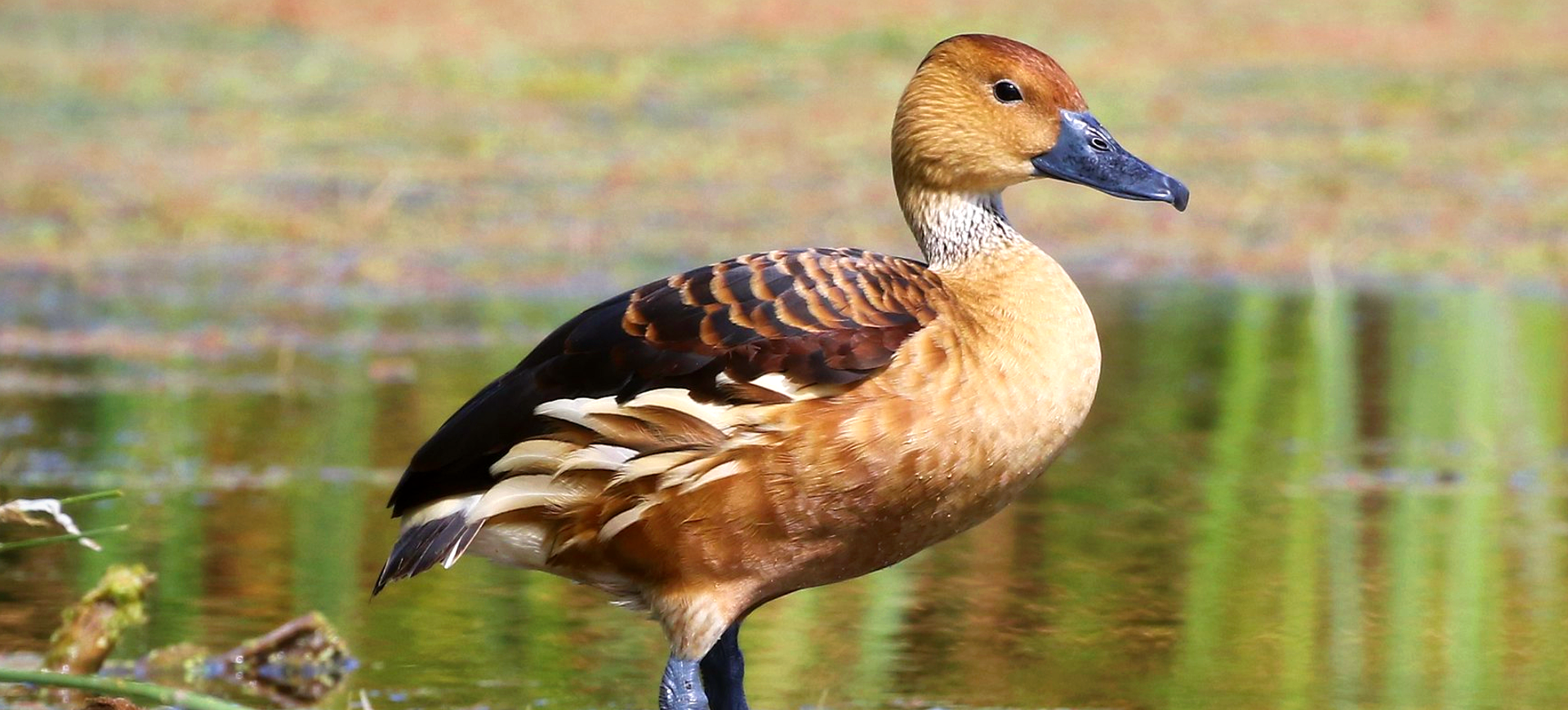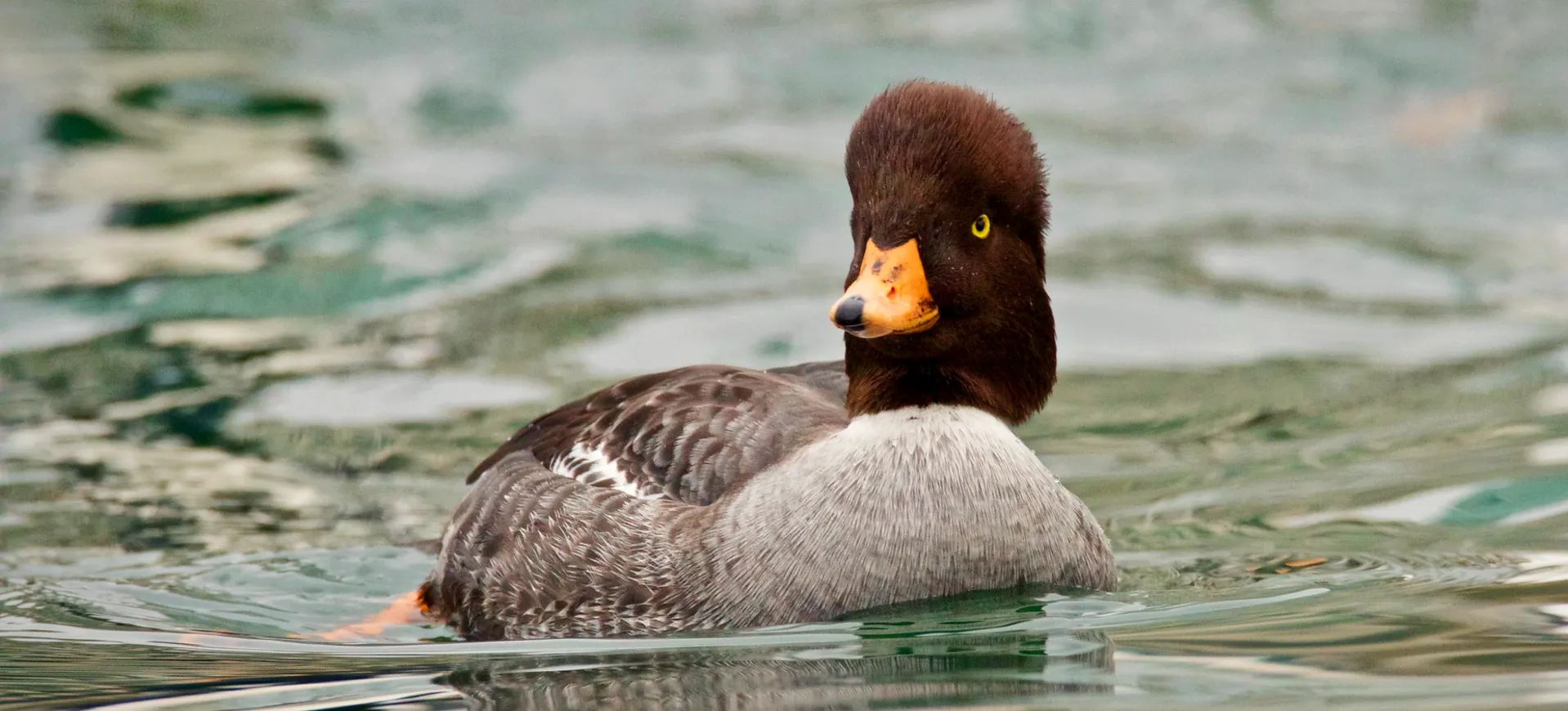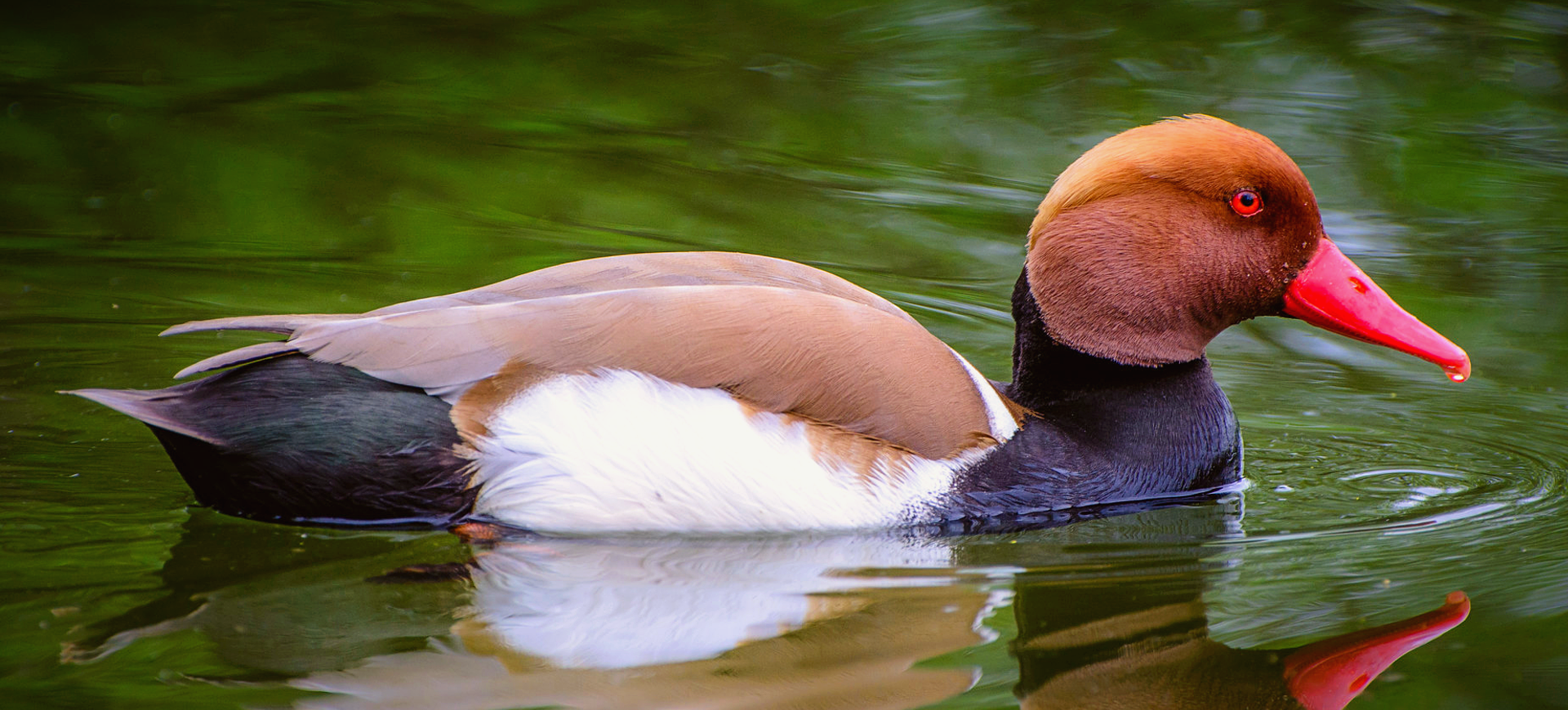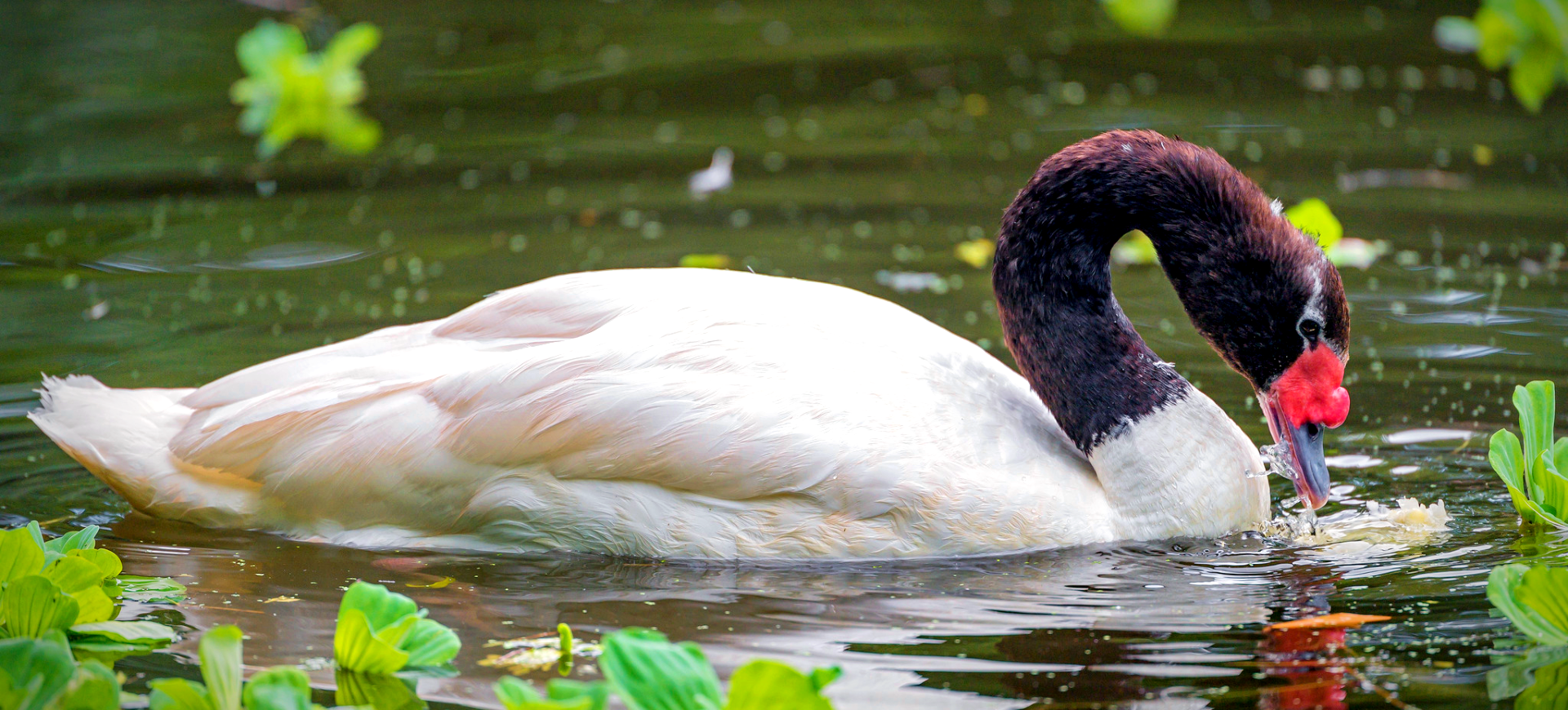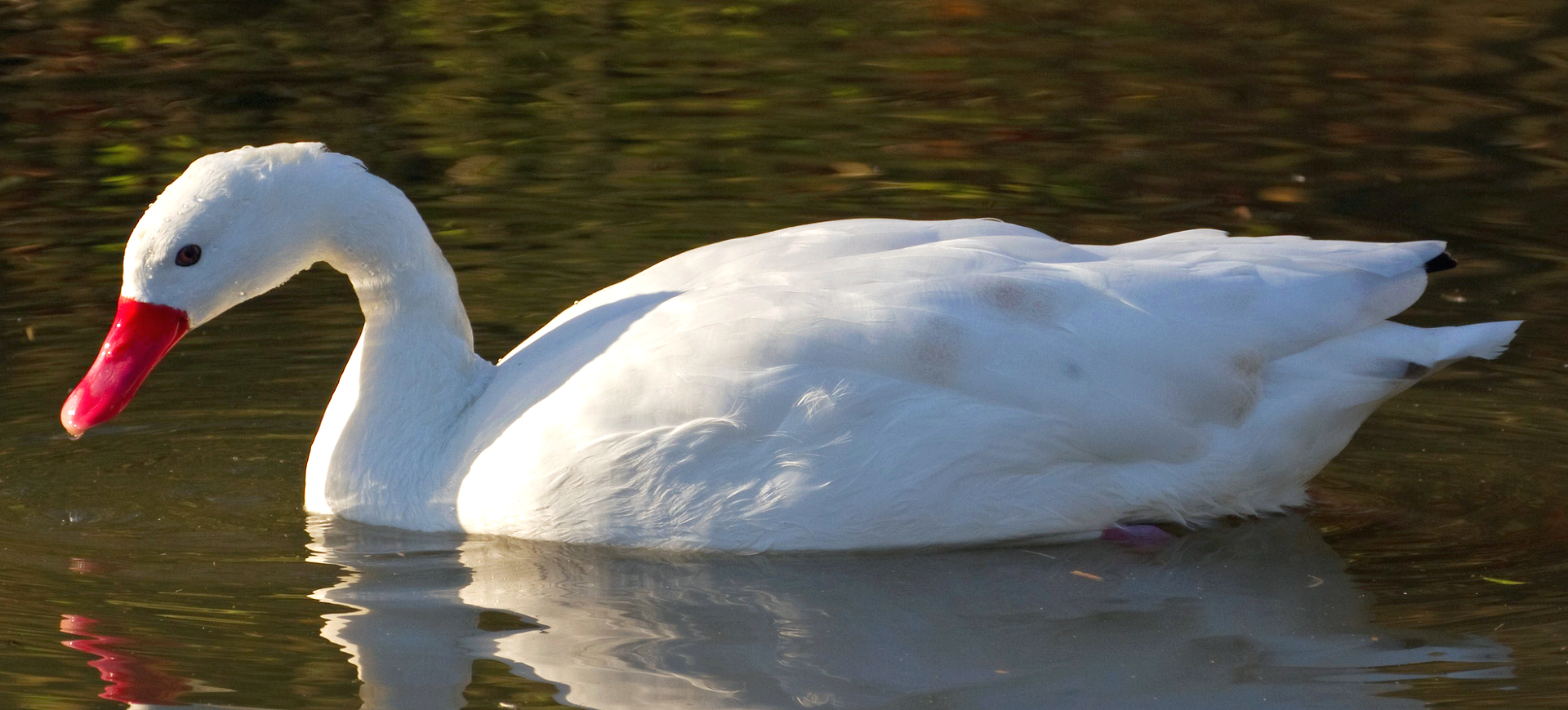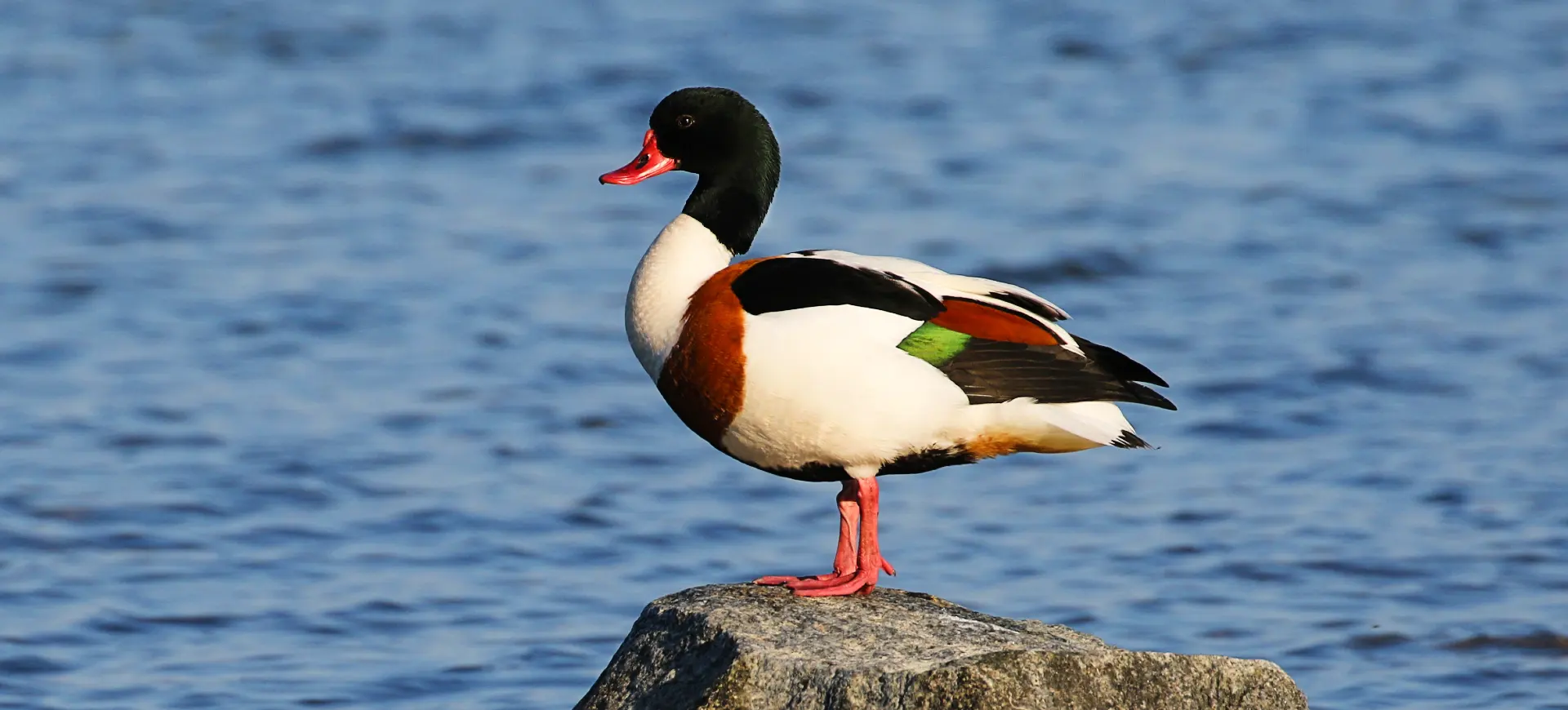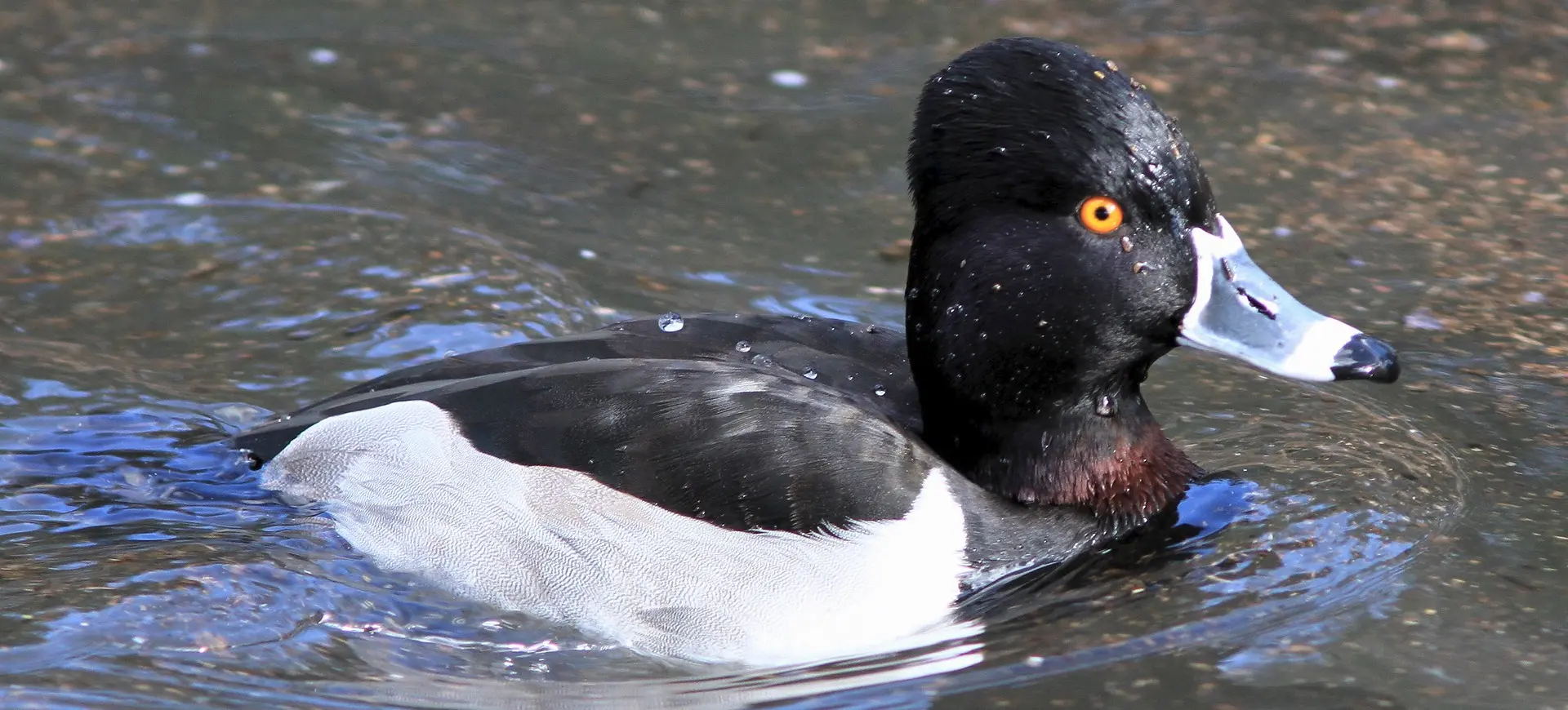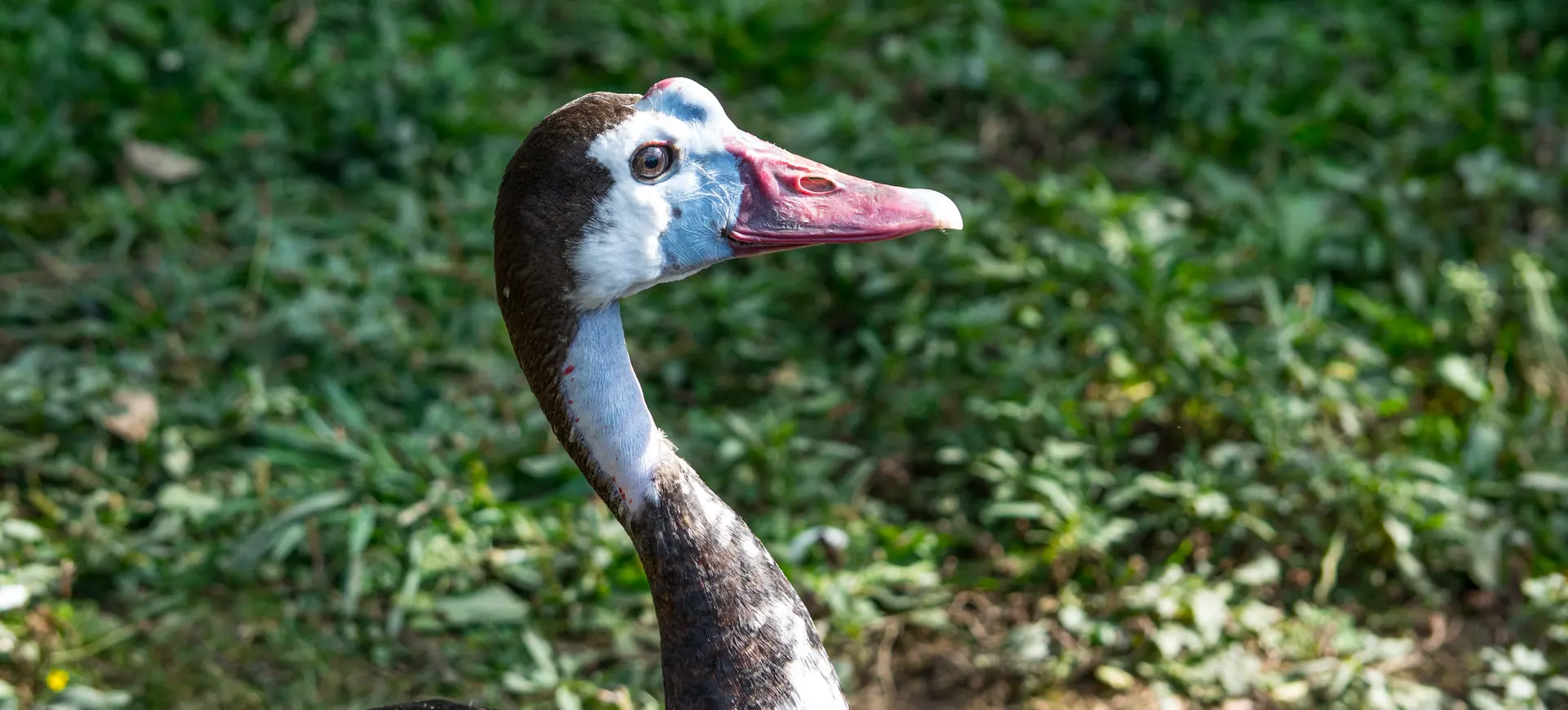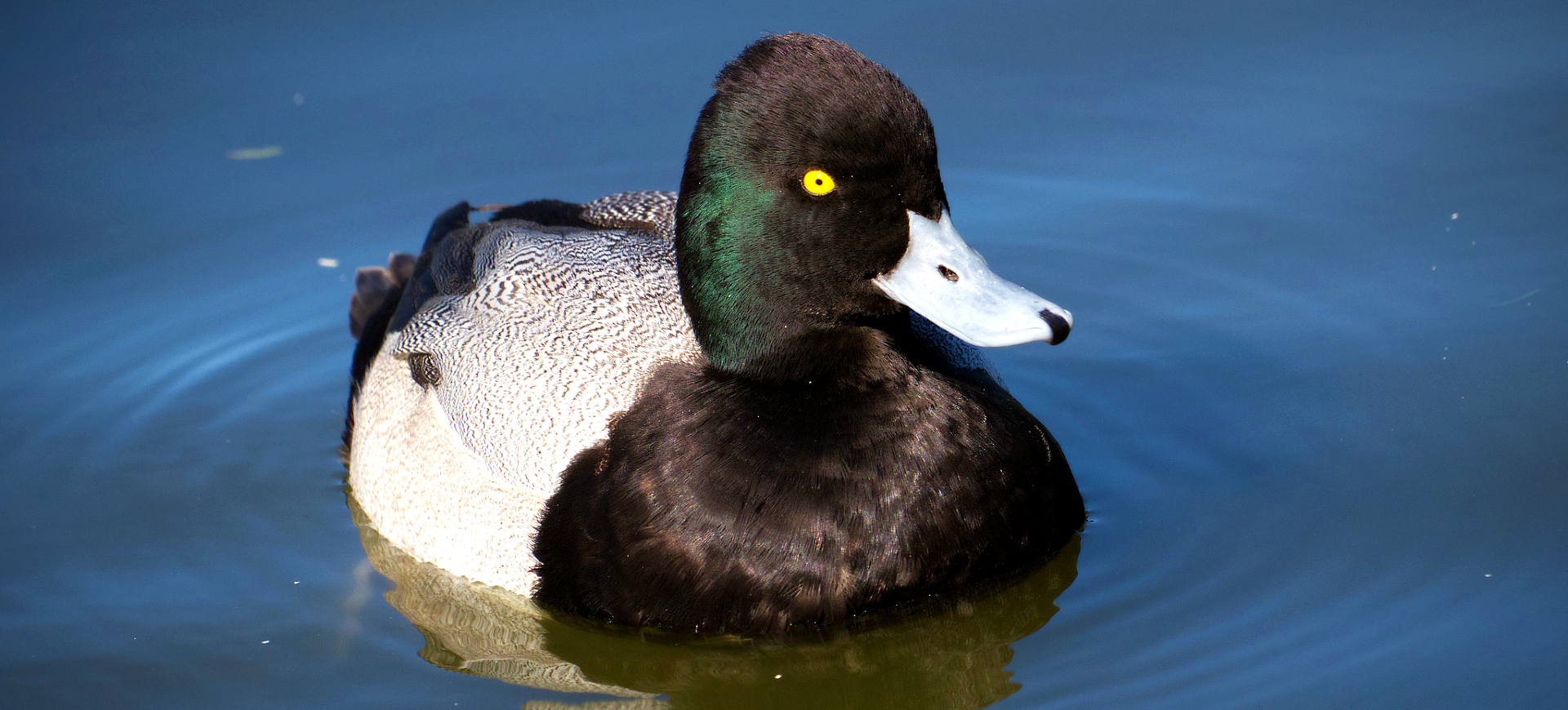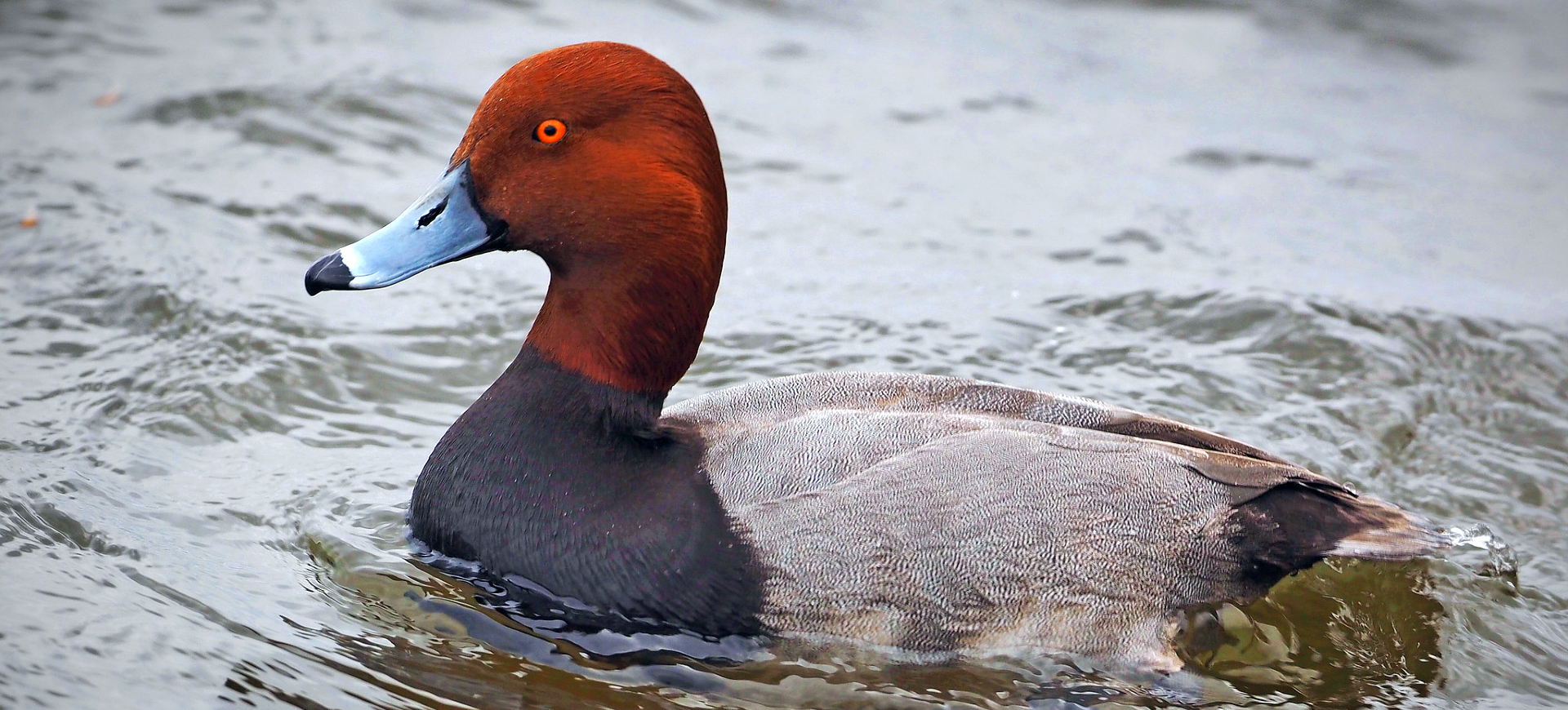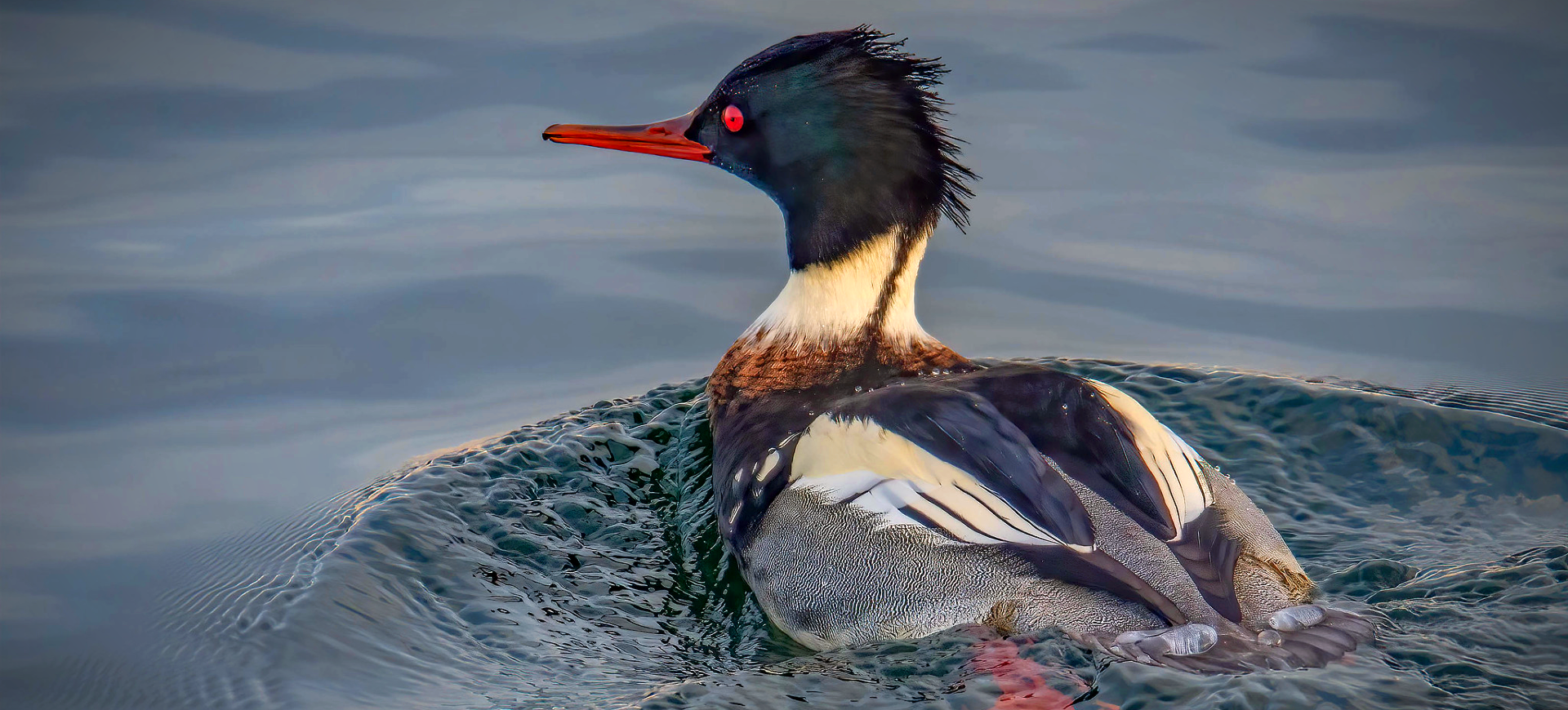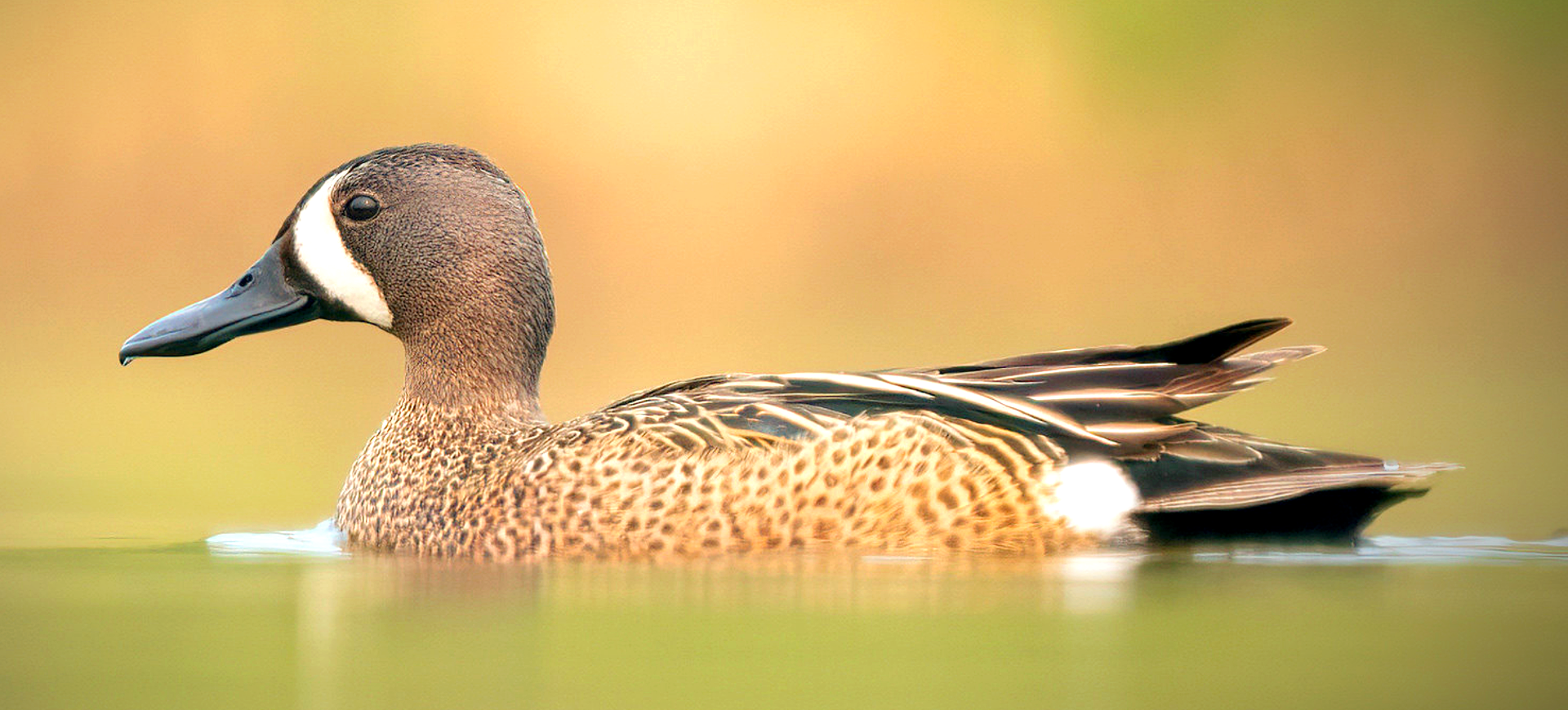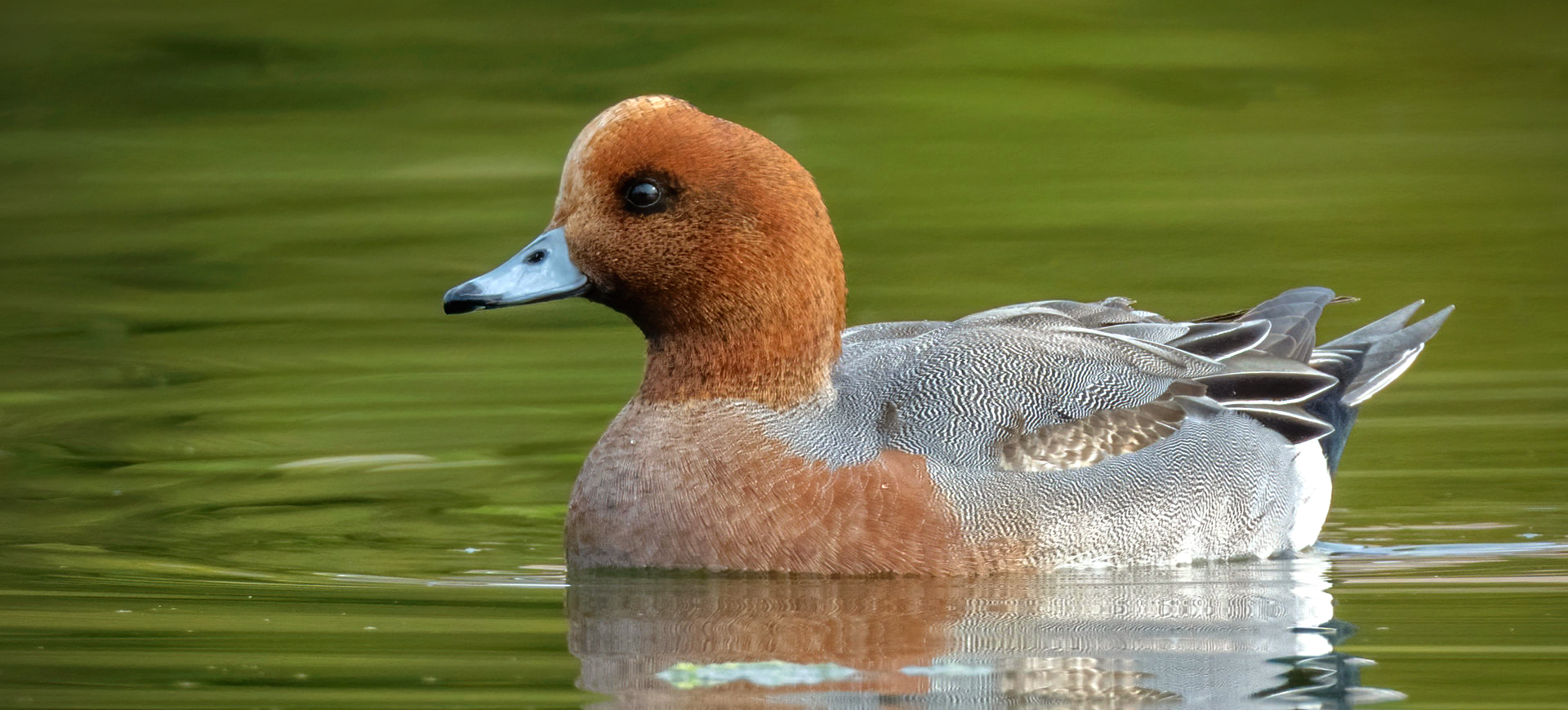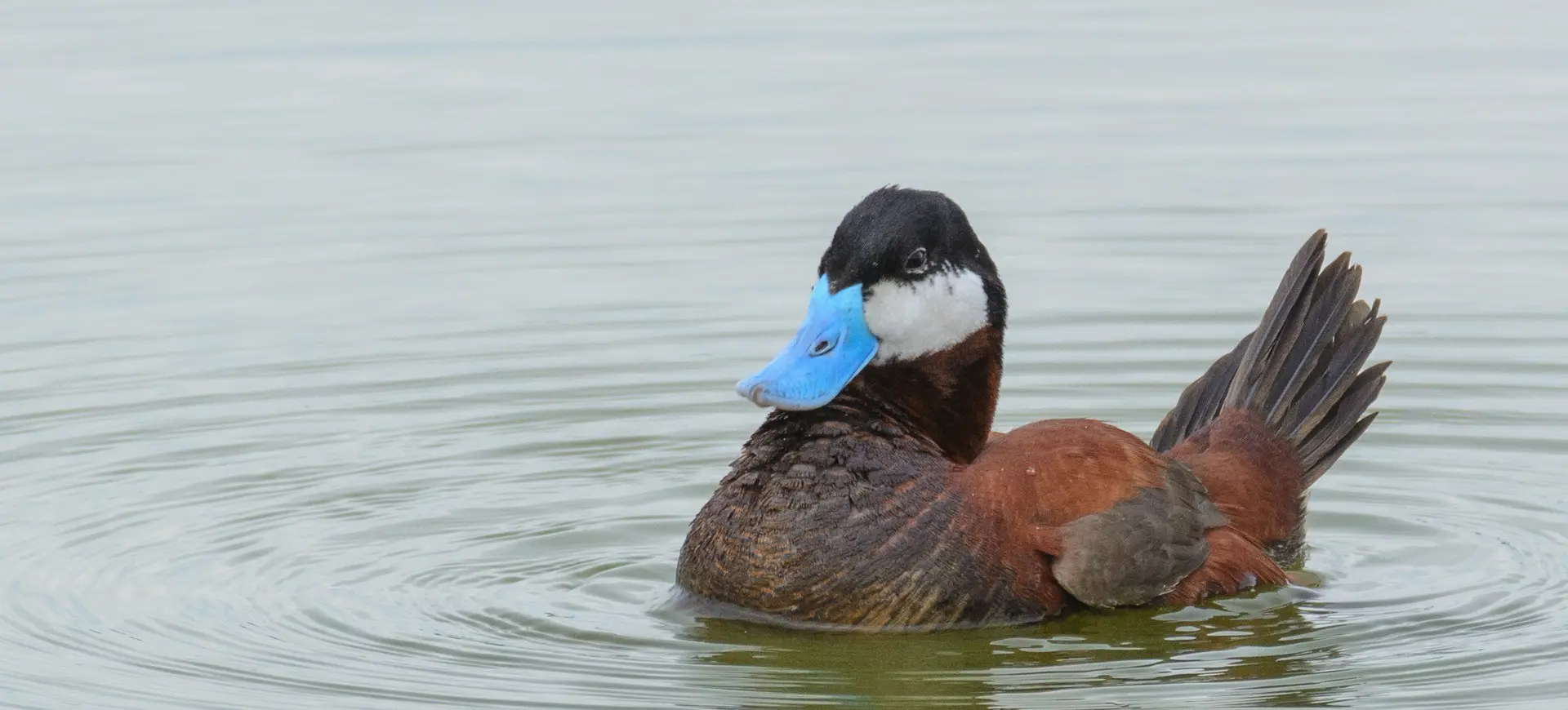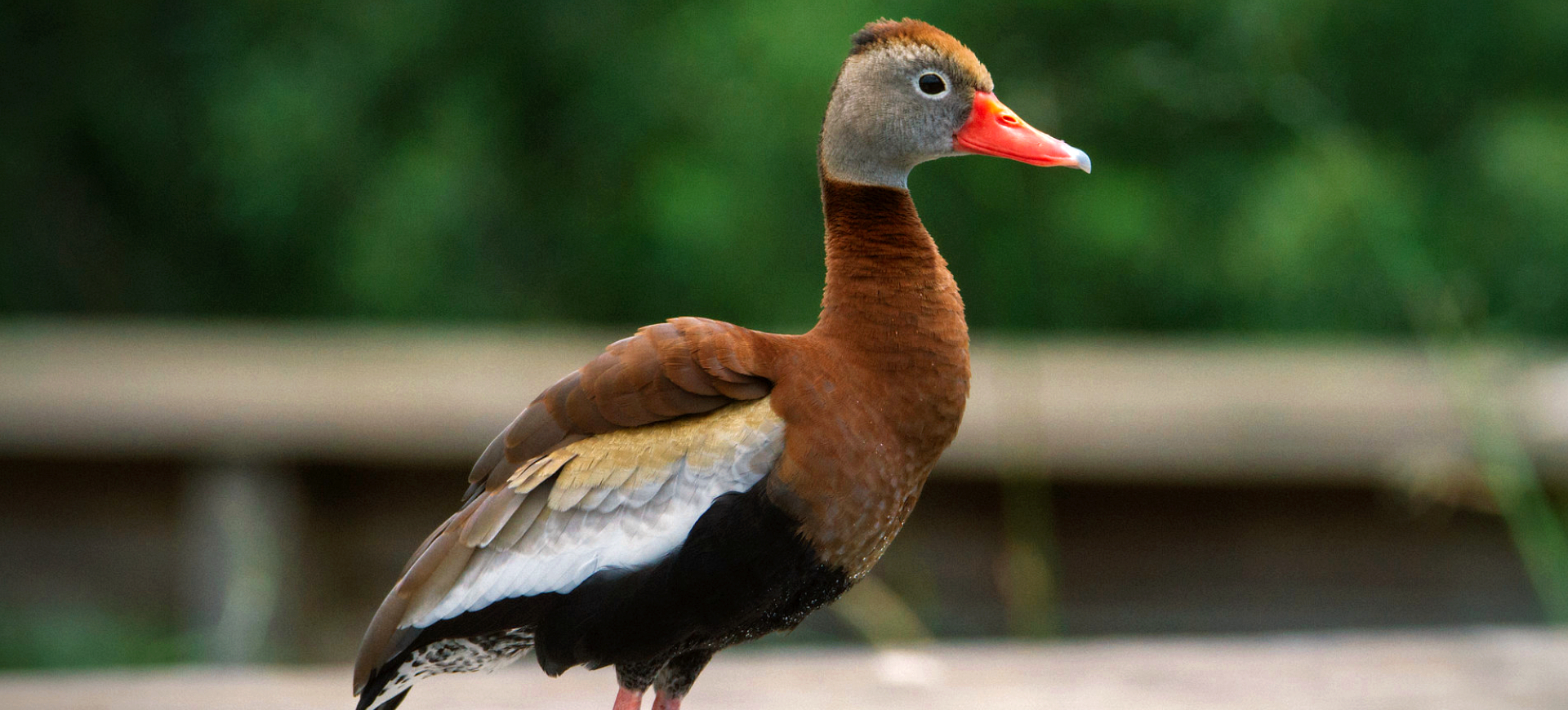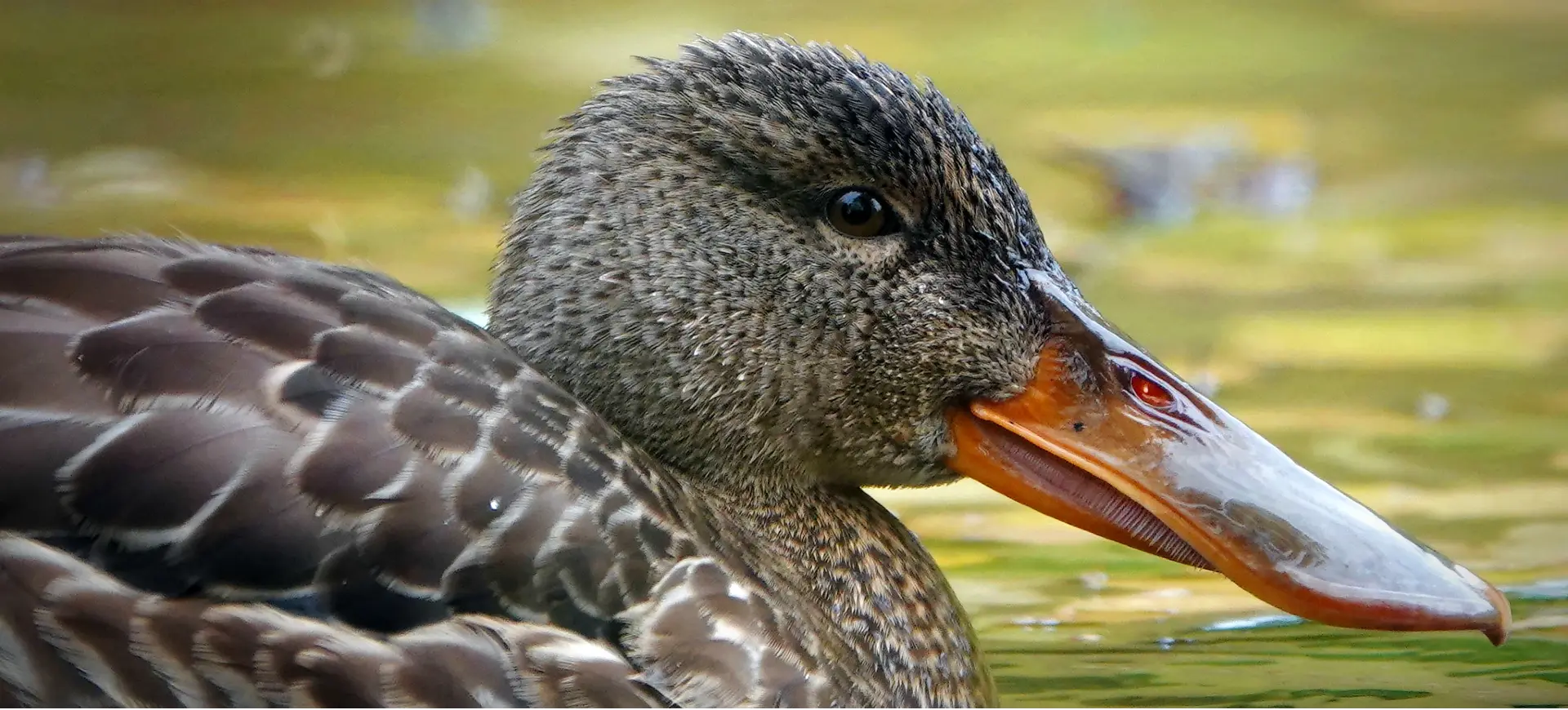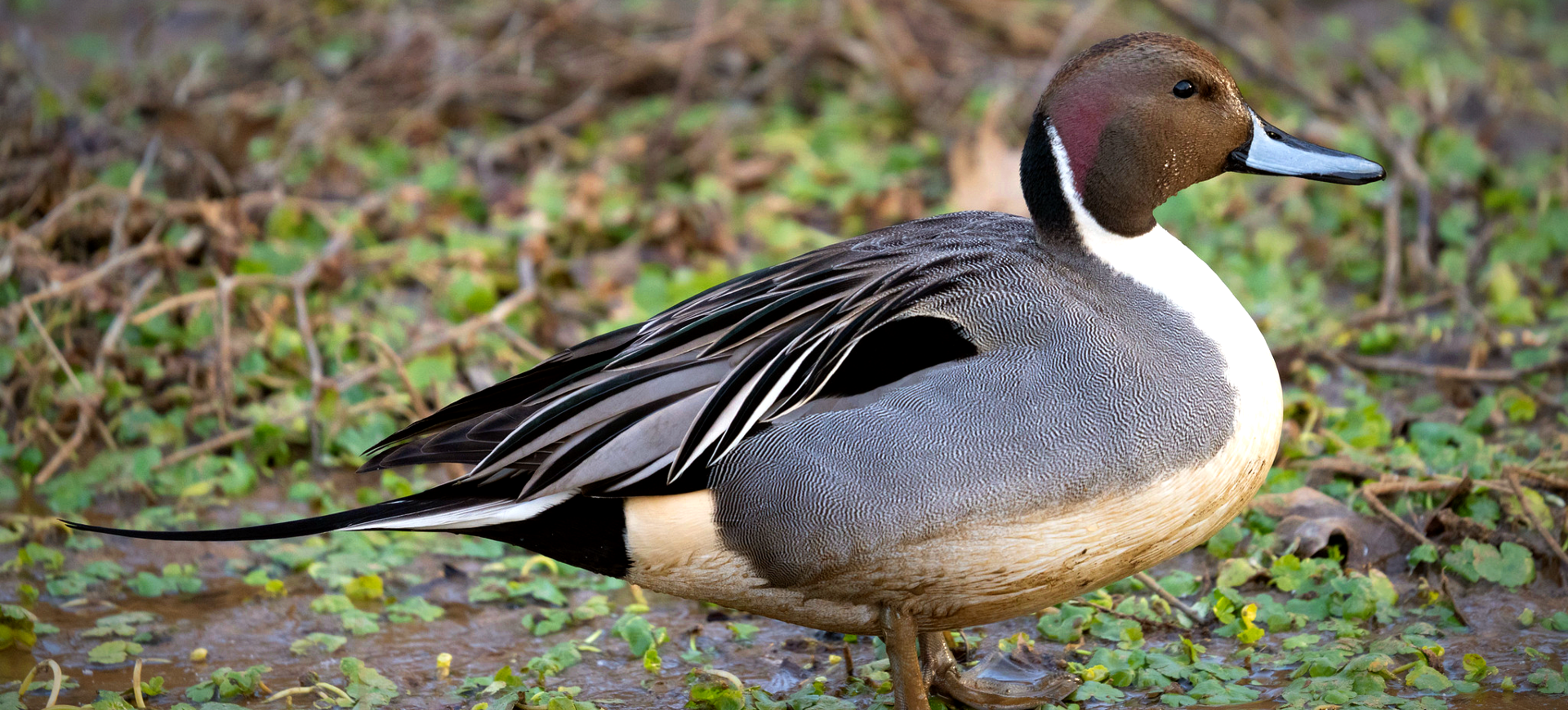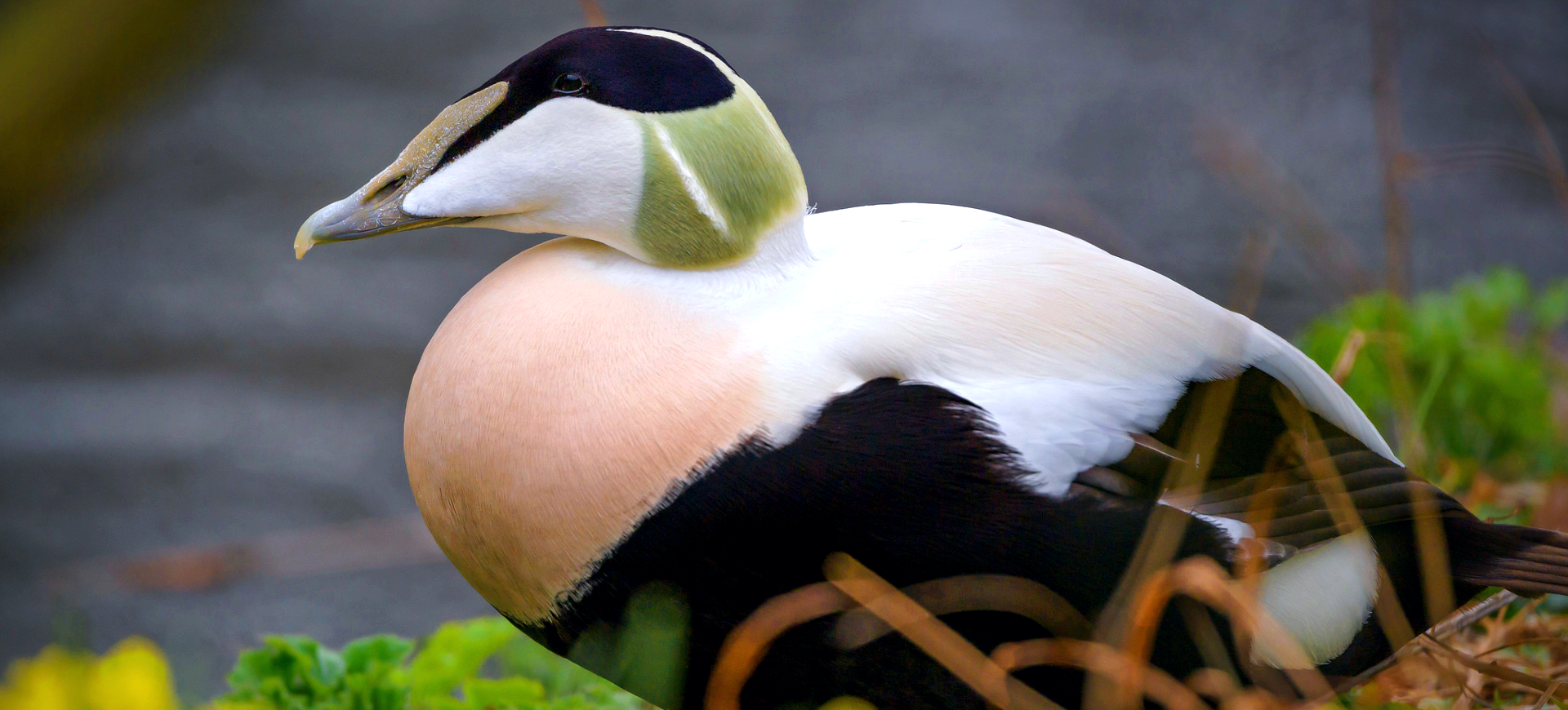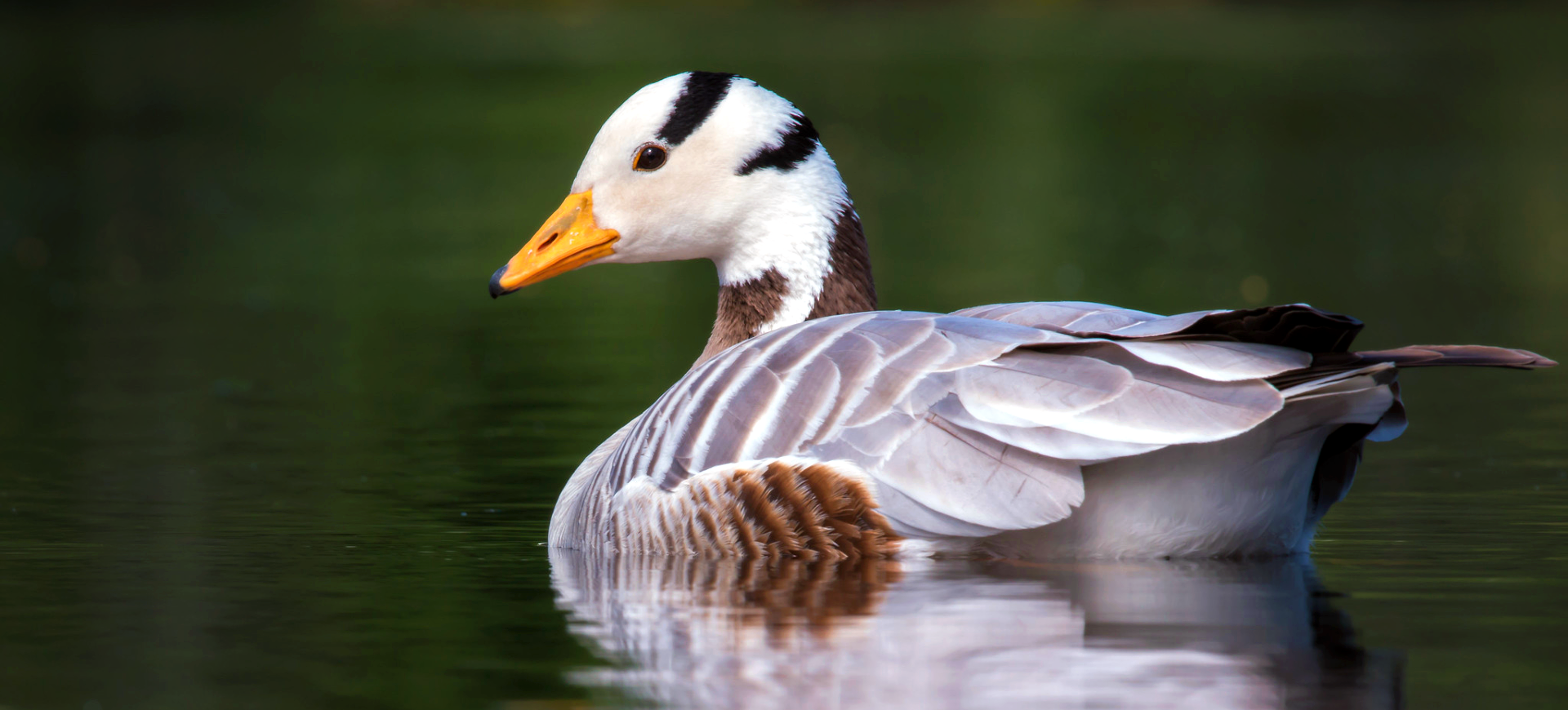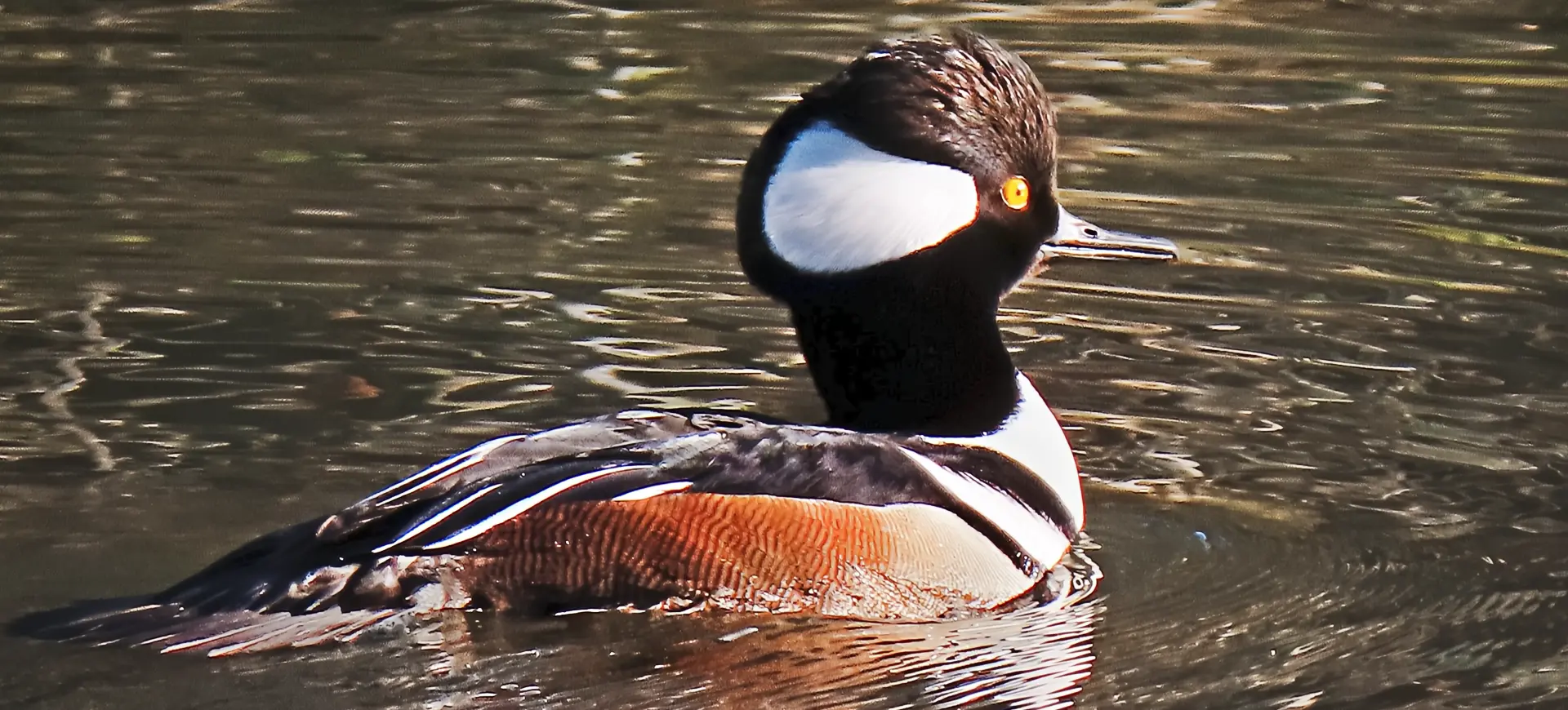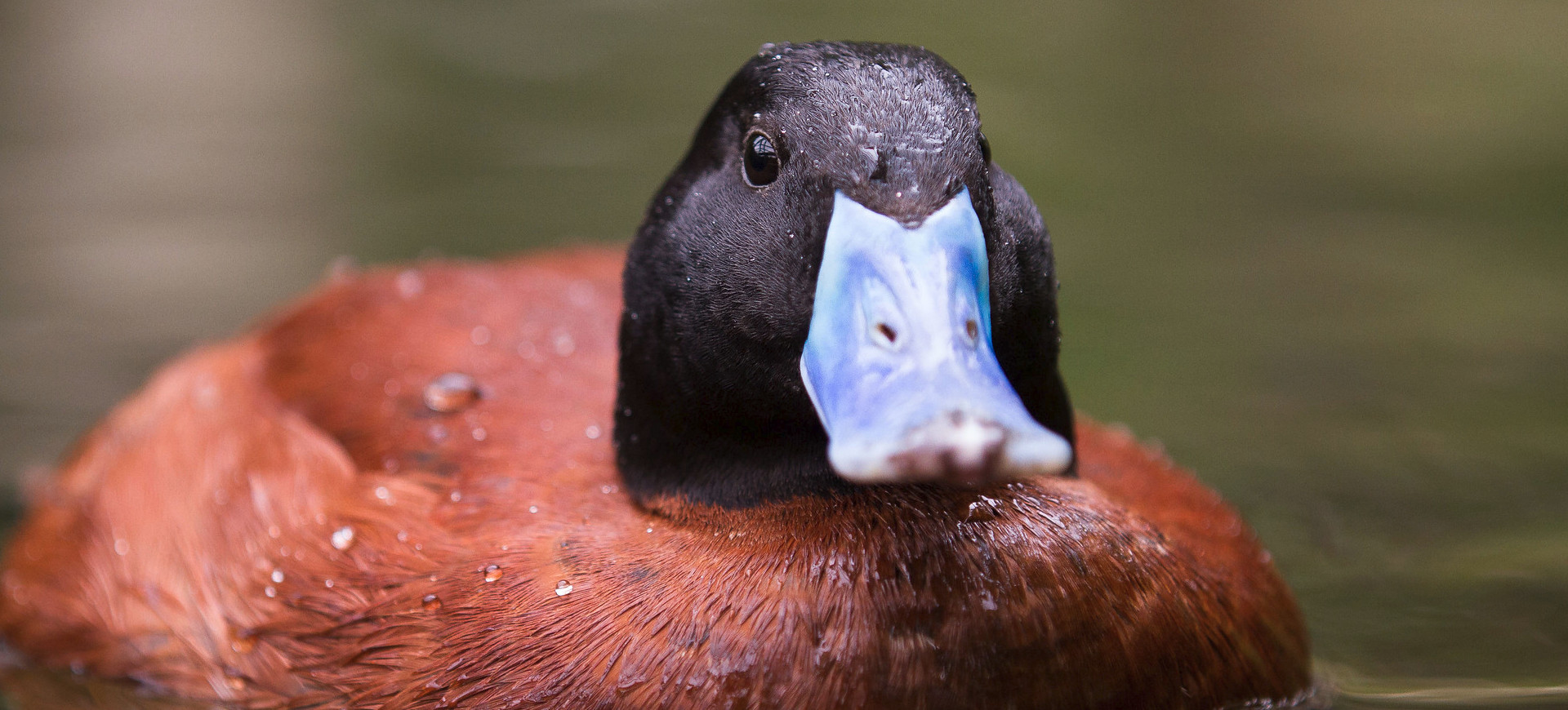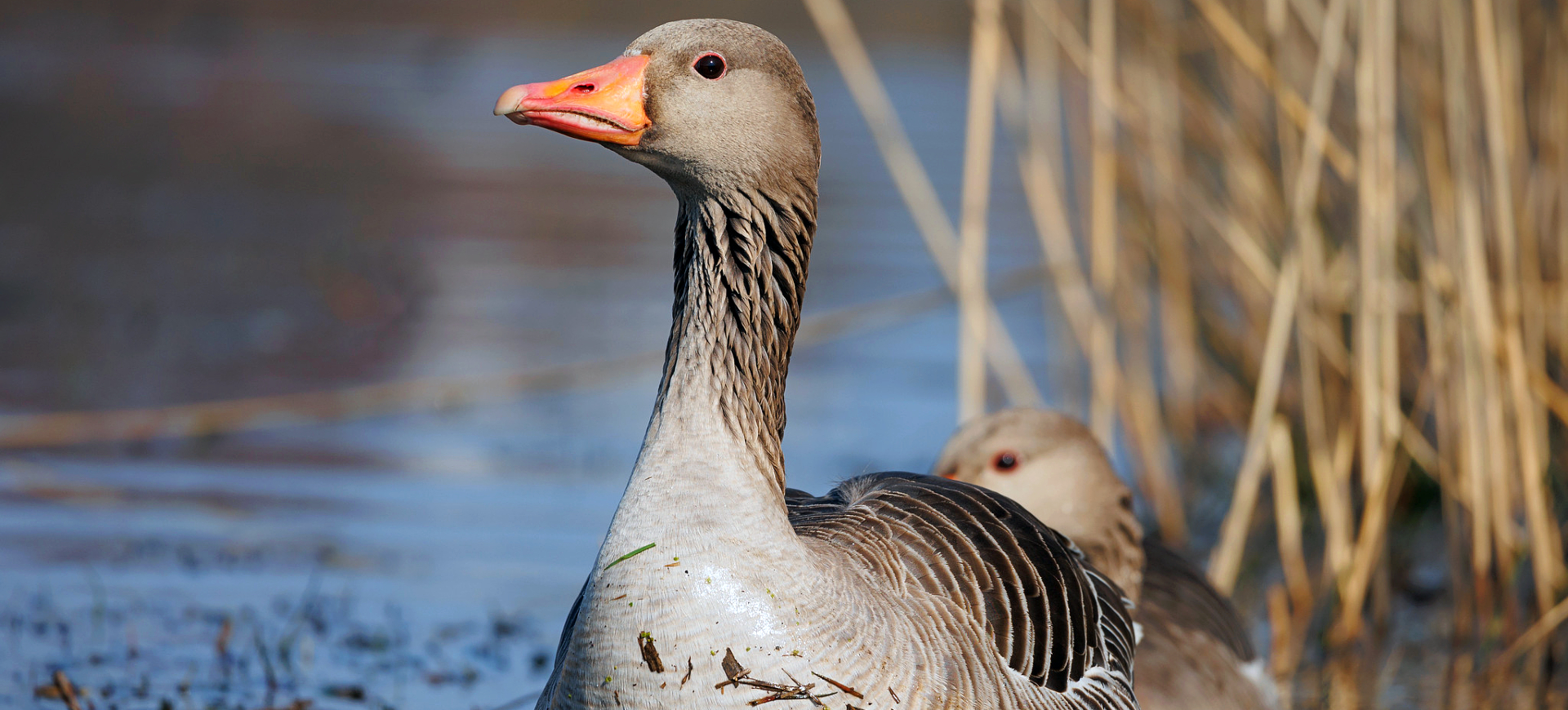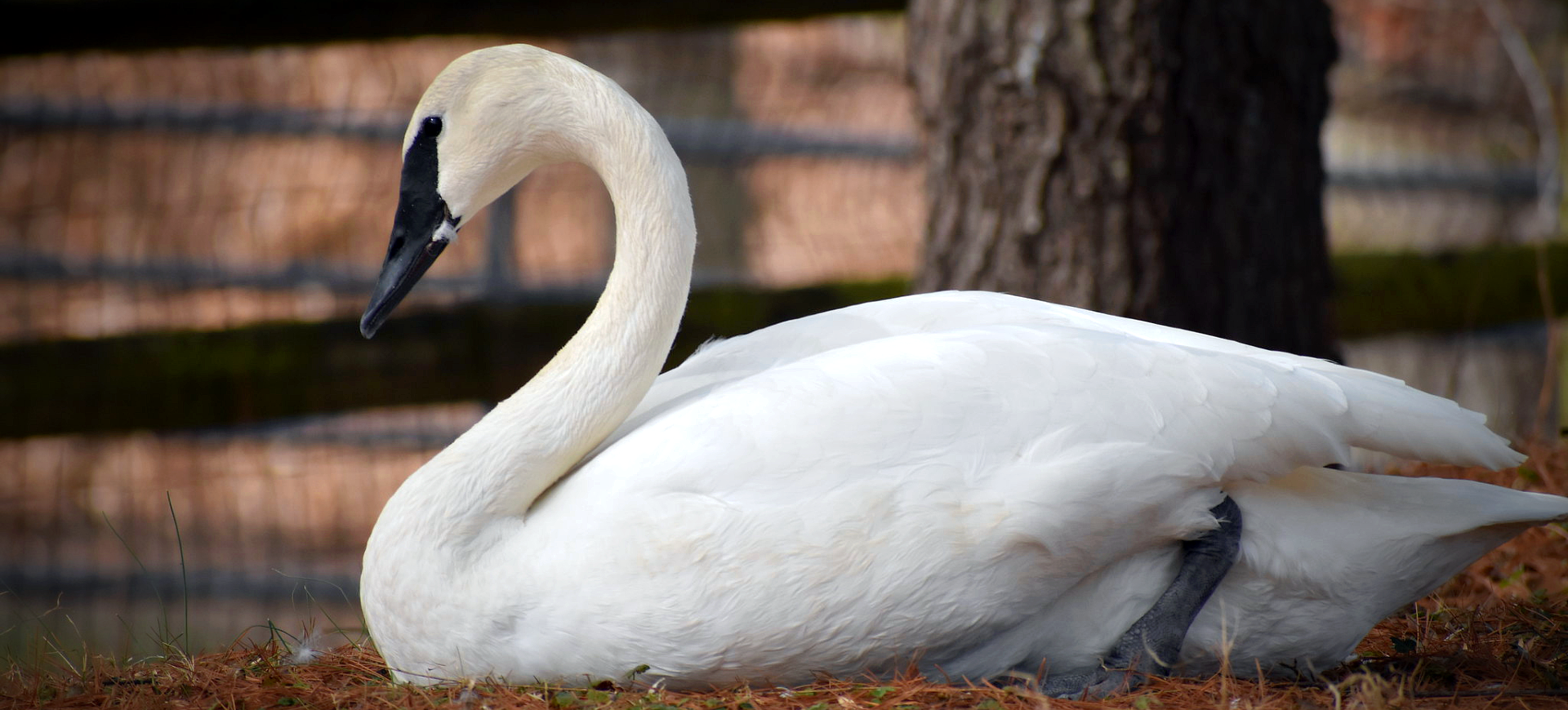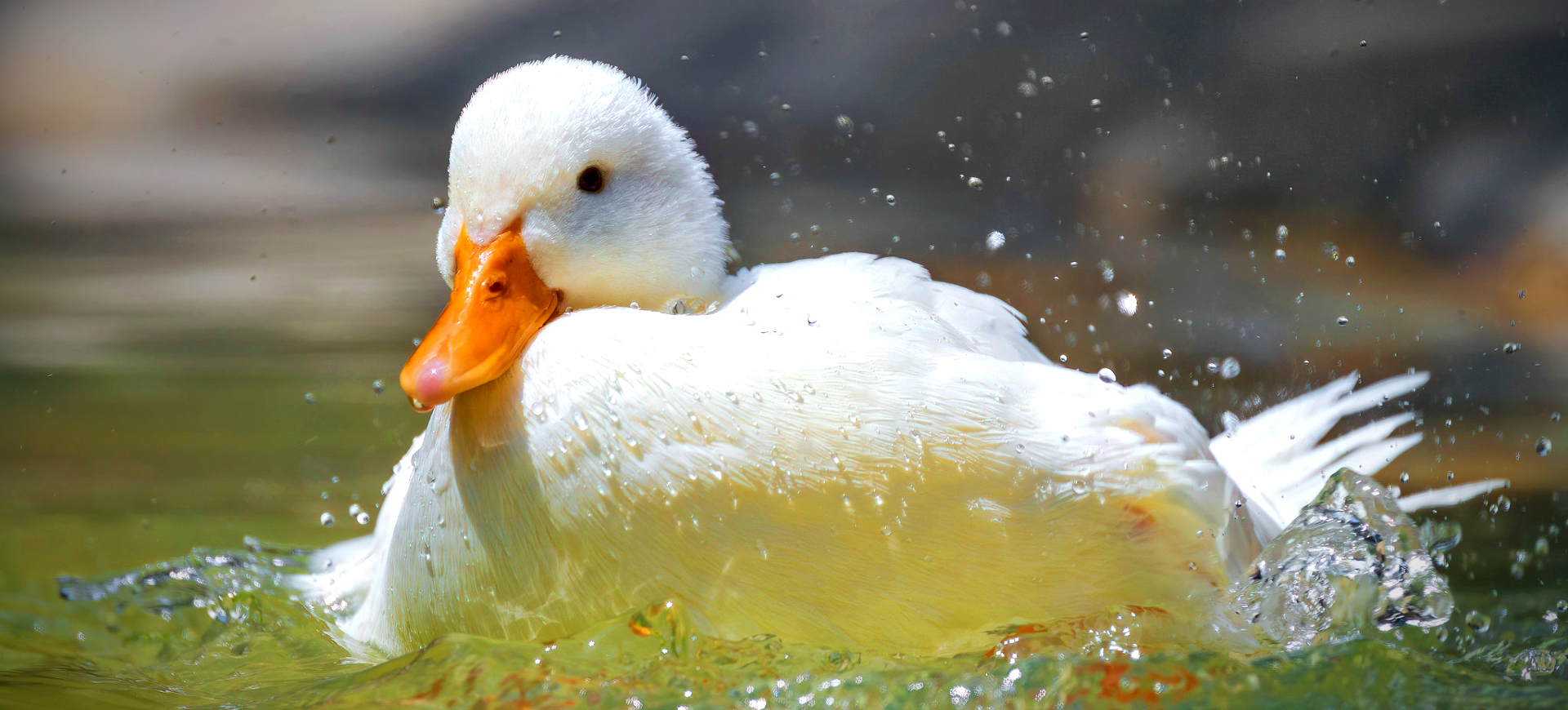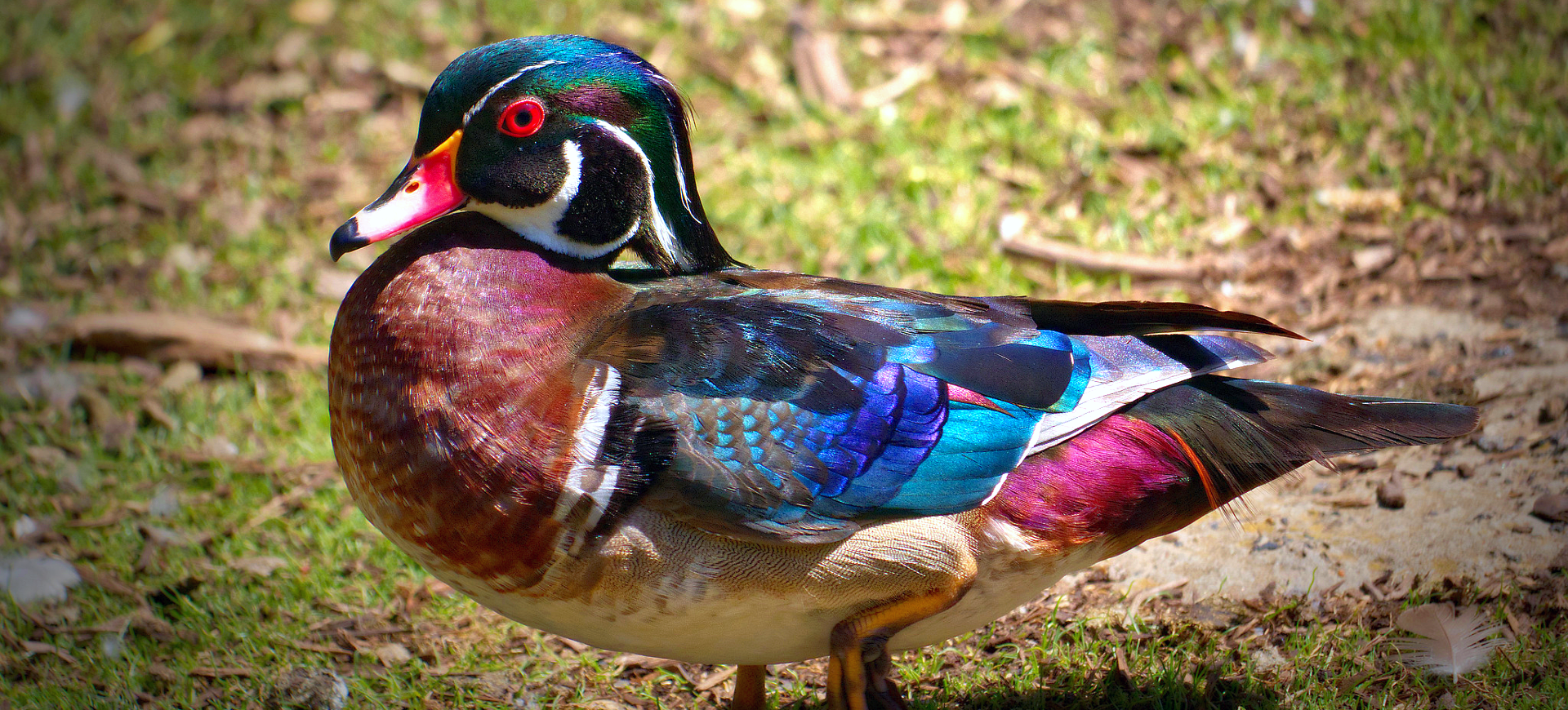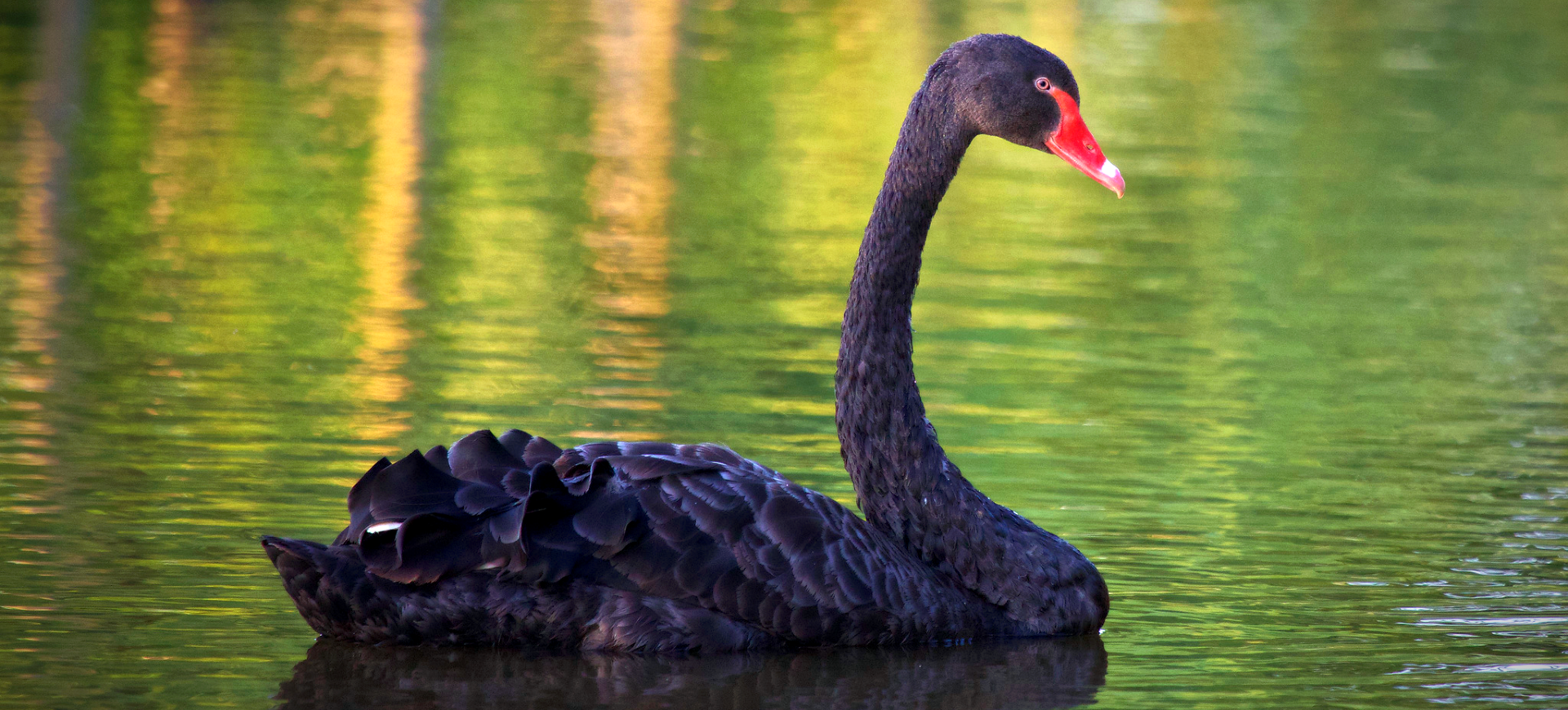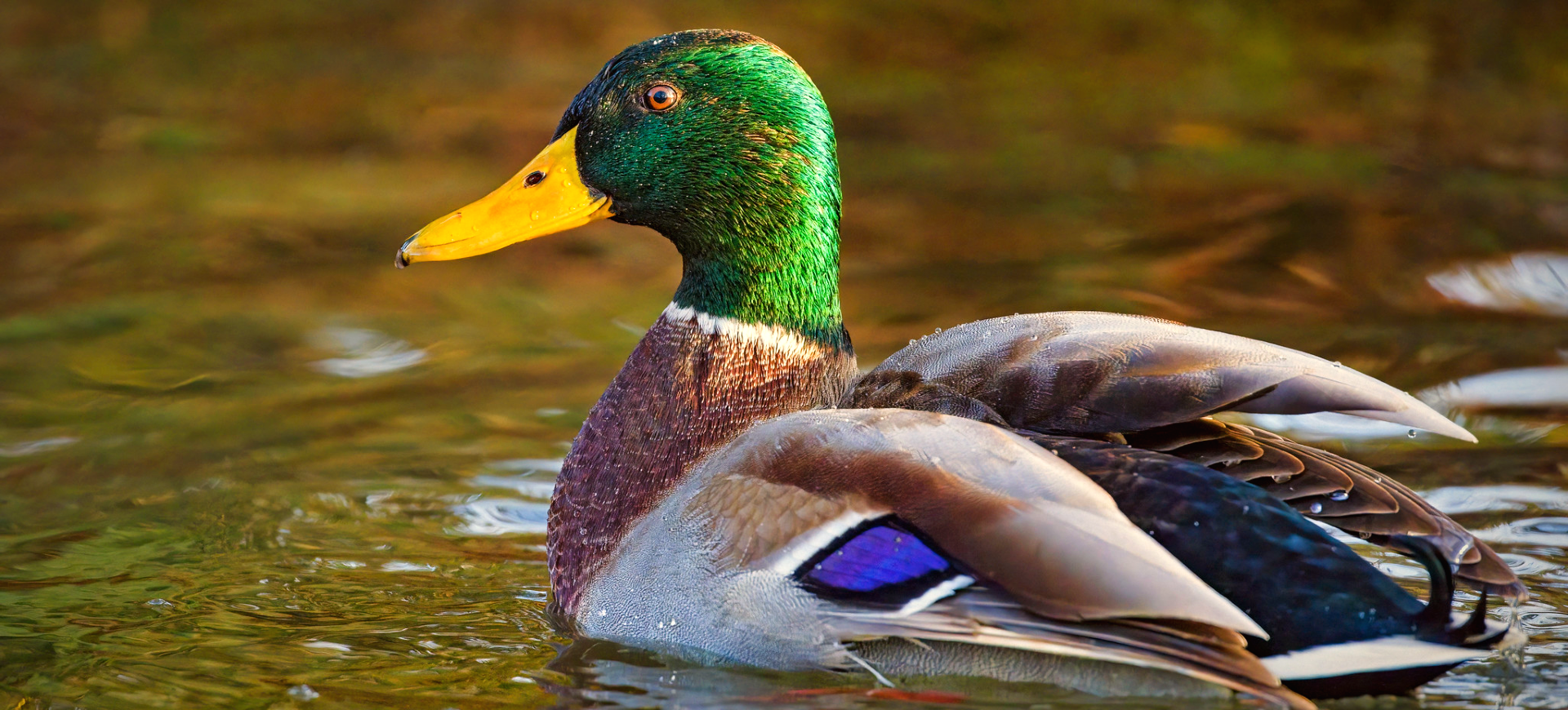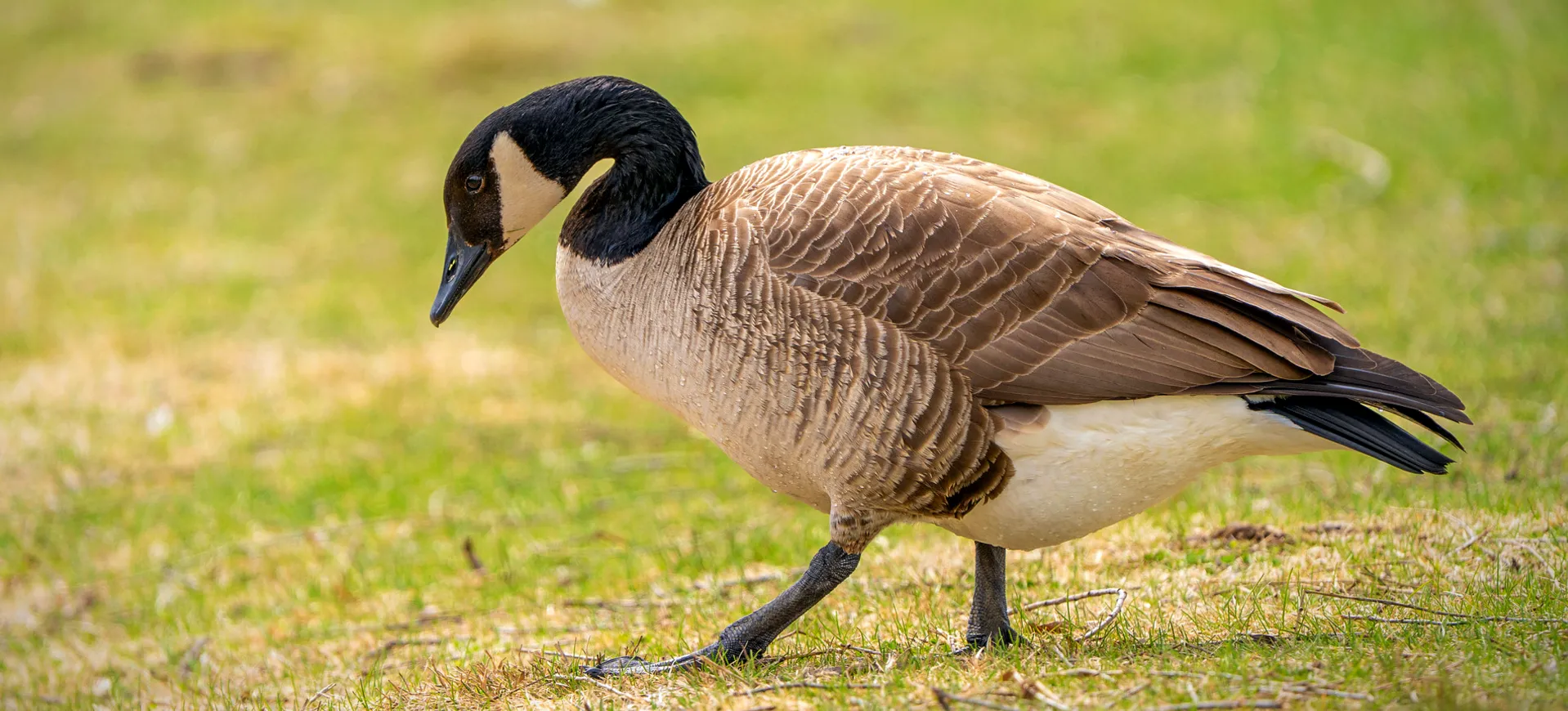Overview
The Egyptian Goose (Alopochen aegyptiaca) is a striking waterfowl species native to sub-Saharan Africa and the Nile Valley, where it inhabits rivers, wetlands, and open grasslands near water sources. This species is readily identifiable by its chestnut eye patches and pale body plumage marked with bold brown and black patterns. Egyptian Geese have been introduced to parts of Europe and are now established as feral populations in several countries, including the United Kingdom and the Netherlands. Their adaptable nature and aggressive territoriality have contributed to their successful colonization outside their native range.
They are primarily diurnal, spending most daylight hours foraging on land and in shallow water, where they graze on grasses and aquatic vegetation. Egyptian Geese are highly vocal, producing loud, honking calls that are used in pair bonding and for defending their territory. Although they belong to the family Anatidae, they are more closely related to shelducks than to true geese. Their historical association with Ancient Egyptian art and symbolism has made them an iconic bird of the Nile region.
This species demonstrates strong site fidelity, frequently returning to the same nesting and roosting areas each breeding season. Both males and females actively defend their territory against conspecifics and other waterbirds, often engaging in aggressive displays. Egyptian Geese are cavity nesters, selecting tree hollows, cliffs, or abandoned nests of other large birds to raise their young. Their populations have increased in some areas due to abundant food resources and a scarcity of natural predators.
Taxonomy
Kingdom
Phylum
Class
Order
Family
Genus
Species
Type
Current distribution:
Historically native to sub-Saharan Africa and the Nile River basin, the Egyptian Goose has expanded its range through both natural dispersal and human introduction. In Europe, feral populations have become established in the United Kingdom, the Netherlands, Germany, and Belgium, where they breed successfully in urban and rural landscapes. Small introduced populations also occur in the United States, particularly in Florida and Texas. In many of these regions, they are considered invasive due to their aggressive behavior and competition with native waterfowl.
Their current global distribution includes both their natural African range and these introduced populations across Europe and parts of North America. Local abundance varies widely depending on habitat quality and management practices. In some areas, control measures have been implemented to limit their spread and reduce conflicts with agriculture and native wildlife. Despite these efforts, Egyptian Geese continue to increase their range and population size in many non-native regions.
Physical Description:
Egyptian Geese are medium-sized waterfowl with a long neck, pink legs, and a slightly wedge-shaped bill that is pink with a dark tip. Their plumage is predominantly light brown to buff, with a distinctive chestnut patch encircling each eye and a dark brown ring across the lower chest. The wings are marked with bold white patches, visible in flight, that contrast with black and iridescent green secondary feathers. Males and females are similar in appearance, though males are generally slightly larger.
The tail is short and black, and the rump and undertail coverts are white, providing a sharp contrast when viewed from behind. Juveniles lack the vivid chestnut eye patches and have duller plumage overall, developing adult coloration by their first molt. During flight, Egyptian Geese show strong wingbeats and a distinctive, slightly hunchbacked silhouette. Their bills are adapted for grazing and dabbling, allowing them to exploit a range of plant material.

Lifespan: Wild: ~15 Years || Captivity: ~25 Years

Weight: Male 4.4–7.7 lbs (2–3.5 kg) || Female 3.3–6.6 lbs (1.5–3 kg)

Length: Male 25–29 in (63–73 cm) || Female 23–27 in (58–69 cm)

Height: Male 24–29 in (60–74 cm) || Female 22–27 in (56–68 cm)

Top Speed: 40 mph (64 km/h)
Characteristic:
Native Habitat:
Egyptian Geese inhabit freshwater wetlands, rivers, lakes, and seasonally flooded grasslands throughout sub-Saharan Africa and the Nile Valley. They prefer habitats with abundant emergent vegetation and open grassy areas for grazing and loafing. Breeding territories are typically selected near water, with suitable nesting sites in tree cavities, cliffs, or on the ground among dense vegetation. Their ability to exploit artificial water bodies has enabled them to thrive in agricultural landscapes and urban parks.
They exhibit a high tolerance for disturbed habitats and can readily adapt to human-altered environments. In many regions, they are frequently observed in irrigation ponds, reservoirs, and golf courses, where food and nesting sites are readily available. Although they are generally non-migratory, some populations exhibit local seasonal movements in response to water availability. Their strong site fidelity often results in dense local populations around reliable resources.
Biomes:
Biogeographical Realms:
Continents:
Countries:
Diet:
Diet & Feeding Habits:
Egyptian Geese are primarily herbivorous grazers, consuming a wide variety of plant material including grasses, seeds, and leaves. They also feed opportunistically on crops such as cereals and young shoots when available. In addition to terrestrial foraging, they dabble and upend in shallow water to access aquatic vegetation and algae. Occasionally, they will consume small invertebrates and insects, particularly during the breeding season when protein demands are higher.
Their diet shifts seasonally depending on resource availability, with a higher intake of seeds and grains during dry periods. Grazing typically occurs in open fields adjacent to water bodies, and flocks often move between feeding sites and roosting areas. They have a robust digestive system that is well-adapted to efficiently process fibrous plant matter. This broad dietary flexibility has facilitated their establishment in a variety of habitats beyond their native range.
Mating Behavior:
Mating Description:
Egyptian Geese form long-term monogamous pairs that maintain strong pair bonds throughout the year. Courtship involves ritualized displays such as head tossing, neck stretching, and loud vocalizations performed by both sexes. Once paired, they defend their nesting territory vigorously, engaging in confrontations with intruders and rival pairs. The nest is typically placed in a tree cavity, on cliffs, or occasionally on the ground, lined with down feathers plucked from the female’s breast.
Clutches generally consist of 5 to 12 creamy white eggs, which are incubated solely by the female. The incubation period lasts approximately 28–30 days, during which the male remains nearby to guard the territory. Upon hatching, the precocial young leave the nest within a day and are led to water by both parents. Family groups stay together for several months until the juveniles fledge and become independent.
Reproduction Season:
Birth Type:
Pregnancy Duration:
Female Name:
Male Name:
Baby Name:
Social Structure Description:
Egyptian Geese are typically observed in pairs or small family groups during the breeding season, with larger flocks forming outside of breeding periods. Pairs defend their territories aggressively, using loud calls and physical displays to deter intruders. In non-breeding times, flocks may gather at communal roosting sites near water bodies or agricultural fields. These gatherings can number in the hundreds, where food is abundant.
Social interactions within flocks are structured around dominance hierarchies, with larger individuals often displacing smaller ones from feeding sites. Juveniles remain with parents for several months after fledging, gradually integrating into larger groups as they mature. Vocal communication plays a key role in maintaining pair bonds and coordinating group movement. Although social outside breeding, pairs remain distinct and reunite each season.
Groups:
Conservation Status:
Population Trend:
Wild populations of Egyptian Geese are generally stable and increasing, with no major widespread declines reported across their native range. The species’ adaptability to human-altered environments has contributed to its success, allowing it to expand into new habitats. In introduced regions, breeding populations have established rapidly due to abundant food and a lack of predators. Although considered Least Concern, their aggressive behavior has raised management concerns in parts of Europe and North America.
Feral populations in Europe have increased substantially over the past few decades, often exceeding the densities of their native counterparts. In some areas, Egyptian Geese outcompete native species for nesting sites and feeding areas. Their prolific breeding potential and tolerance for urban areas have further accelerated population growth. Continued monitoring is needed to assess their ecological impacts outside their native range.
Population Threats:
In their native range, Egyptian Geese face localized threats, including habitat loss due to wetland drainage and agricultural expansion. Hunting pressure in some African countries also affects local populations, particularly near human settlements. Introduced populations face fewer natural predators and generally thrive; however, occasional control measures are implemented to protect crops and native species. Disease outbreaks, such as avian influenza, can occasionally impact densely populated areas, especially in urban settings.
Human-wildlife conflict has increased where Egyptian Geese damage crops or displace native birds from nesting habitats. Their territorial aggression contributes to ecological disruption in regions where they are invasive. Egg predation by mammals and reptiles remains a natural limiting factor in some areas. Despite these pressures, their overall resilience and adaptability have enabled populations to remain robust.
Conservation Efforts:
Conservation measures focus primarily on monitoring populations and managing conflicts in introduced areas rather than protecting the species itself. In Europe, management strategies include population control through egg removal and regulated culling where geese threaten sensitive habitats. Public awareness campaigns educate landowners and park managers about coexistence and humane control practices, promoting a more harmonious relationship between humans and wildlife. In their native range, wetland conservation indirectly supports Egyptian Goose populations by preserving essential breeding and foraging habitats.
International regulations, such as the EU Birds Directive, may influence management decisions in certain parts of Europe. Research into ecological impacts helps guide policy and determine where interventions are needed. Captive breeding is not prioritized, as the species is widespread and not threatened globally. Continued monitoring ensures that any emerging threats can be addressed promptly and effectively.
Additional Resources:
Fun Facts
- Egyptian Geese were considered sacred by the ancient Egyptians and appear frequently in art and hieroglyphs.
- They are not true geese but are more closely related to shelducks.
- Feral populations in Europe are known for their bold behavior and tolerance of humans.
- Their loud, cackling calls can be heard over long distances.
- They sometimes nest on buildings and rooftops in urban environments.
- The chestnut eye patch is a key identifying feature in adults.
- Goslings can swim and feed themselves within a day of hatching.
- Pairs stay together for life and return to the same breeding sites annually.
- They often graze on lawns and golf courses, leading to conflicts with property owners.
- Egyptian Geese have been observed engaging in aerial territorial battles.


